Frank F. Weber's Blog
August 13, 2024
Stalking
 The Netflix show Lover, Stalker, Killer is worth watching. I’m not writing about that case, but I will provide some general information on stalkers.
The Netflix show Lover, Stalker, Killer is worth watching. I’m not writing about that case, but I will provide some general information on stalkers. Characteristics of a stalker: Typically, 30’s to 50’s (not always), underemployed (it takes time to stalk), often an ex-intimate partner of the victim, and chronic social failure.

 Rebecca Schaefer was in the television series My Sister Sam. She was kind to fans, and not aware of one fan’s growing obsession with her. On July 18, 1989, she answered the door and was shot to death by a man who had sent her letters. She responded to one letter by stating his words were kind. Rebecca was 21 years old. Robert Barto killed actress Rebecca Schaefer. Barto had a neglectful and mentally ill mother, an alcoholic father and a cruel older brother. Robert was considered intelligent but dropped out of high school. He had a foster home placement. Barto wrote this in a letter to his sister before the murder. “I have an obsession with the unobtainable and I have to kill what I can’t obtain.” From a psychoanalytic perspective, envy has to destroy what it can’t have. The criterion for stalking is there has to be a pattern of observing a person, an unwanted threat, and a fearful victim. The majority of stalking is by an ex-intimate partner.
Rebecca Schaefer was in the television series My Sister Sam. She was kind to fans, and not aware of one fan’s growing obsession with her. On July 18, 1989, she answered the door and was shot to death by a man who had sent her letters. She responded to one letter by stating his words were kind. Rebecca was 21 years old. Robert Barto killed actress Rebecca Schaefer. Barto had a neglectful and mentally ill mother, an alcoholic father and a cruel older brother. Robert was considered intelligent but dropped out of high school. He had a foster home placement. Barto wrote this in a letter to his sister before the murder. “I have an obsession with the unobtainable and I have to kill what I can’t obtain.” From a psychoanalytic perspective, envy has to destroy what it can’t have. The criterion for stalking is there has to be a pattern of observing a person, an unwanted threat, and a fearful victim. The majority of stalking is by an ex-intimate partner.  A typology of stalkers was developed by Paul Mullen, Michele Pathé and Rosemary Purcell. Here are the 5 categories of stalkers:
A typology of stalkers was developed by Paul Mullen, Michele Pathé and Rosemary Purcell. Here are the 5 categories of stalkers:Rejected stalkers = Individuals who are looking for both reunification and to punish their former partner, as a result of his feelings of rejection. The rejected type needs legal sanctions before they change. More often than not, they do respond to legal sanctions.Intimacy seekers = This person has erotomanic delusions. They feel that the victim is their true love, and they are oblivious to the victim’s responses. They put the victim up on a pedestal. The type of attention they receive doesn’t matter (negative or positive). They simply want their attention. The intimacy seeking stalker needs psychiatric involvement (medication). They are delusional. Sanctions don’t seem to make a difference. Incompetent stalkers = This stalker acknowledges that the victim doesn’t share their feelings but surges forward like a bull in a China shop. They tend to be socially inept and entitled. They more often have an intellectual disability than the other types. The incompetent stalker will often move on to another victim when they are not getting the responses that they desire from the first victim. Resentful stalkers = they tend to be on the paranoid spectrum and feel persecuted. Their goal is to frighten and distress their victim. They want to inflict fear. Predatory stalkers = In this case, more often than not the victim does not know the stalker. The stalker is a sexual predator. They study the victim to look for a vulnerability. They have paraphilias and often have prior sex offenses. They often have a rape kit handy.
Factors that increase risk:
Rejected and Predatory stalkers have the most assaults.
The rejected ex-intimate partner has the highest risk of violence.
Threats increase risk.
Last resort thinking (They talk about the pending punishment of the victim as if it’s a forgone conclusion. “It’s already done”).
Approaching the victim. For example: Property damage to the victim.
Sample of a case with an Intimacy Seeker stalker (erotomanic):
In court, the judge said to him, “I’m willing to let you walk out of this court room today, and go home, if you will promise to stay away from the victim.”
The stalker responded, “Judge, have you ever known true love?” Needless to say, he did not go home that night.
If you’re being stalked, report it to the police. If you have concerns that someone could stalk you, and you still have contact with that person, you need to make the separation clear. Leave nothing to interpretation. Remember ex-intimate partners are the most lethal. Don’t deal with it alone. They want to isolate you. When you increase the number of people who support you, you weaken their power.
 Psychopathy:
Psychopathy:The Dark Tetrad (DT) is composed of the traits of Narcissism, Machiavellianism, Psychopathy and Sadism. It is an extension of the Dark Triad first introduced in 2013. (The Dark Triad did not include Sadism.) Machiavellian means cunning and lacking a moral code. The term is associated with Italian philosopher Niccolo Machiavelli, who wrote the political treatise The Prince in the 1500s, and encouraged “the end justifies the means” behavior, especially among politicians. We have too much of this attitude today.
 Antisocial individuals often have good or charming surface-level social skills. Their social skills are not very deep or long-lasting, but they can make a good initial impression.
Antisocial individuals often have good or charming surface-level social skills. Their social skills are not very deep or long-lasting, but they can make a good initial impression.Psychopaths are often abnormally calm when individuals who “just” antisocial will become upset or angry. Psychopaths tend to underreact. They lack close emotional relationships. They lack emotional attachment. When they build relationships, it is only for the benefit of themselves. They lack remorse. Antisocial Personality Disordered individuals can have empathy for their children or family. A psychopath is narcissistic and has intense but shallow emotions. They have a high degree of boredom and a need for stimulation. Characteristics of a psychopath include disinhibition, while at the same time, stimulus seeking, meanness (aggressively pursuing what they want without concern of the impact on others), and boldness (as defined as being socially dominate and lacking inhibition). Robert Hare, the world’s expert on psychopaths, commented that our society is moving toward valuing some of the traits of psychopathy. Most narcissists aren’t psychopaths, but psychopaths are very narcissistic. A high degree of narcissism makes them more dangerous. Their lack of contrition seems to stand out most in the interviews. Individuals with psychopathy will typically not back down when caught in a lie. Instead, they tend to double down and argue for the lie. They are talkative and attempt to dominate the conversation. They will often shift the topic if they feel they are not in control. They often omit essential details and avoid words associated with emotion. Psychopaths have a low frustration tolerance but can postpone expressing it until they have full control of a situation.
It is estimated that about 1 in 10 psychopaths are female. Female psychopaths don’t exist in equal numbers, but they exist. Female psychopaths still tend to have some interest in social interaction. They are more prone to social forms of manipulation. Female psychopaths are more likely to use sexuality rather than force. Female psychopaths may use sexuality more than men because it is available to them. In other words, psychopaths will use what is available to manipulate others. If that same resource was there for men, they would use it also.
 Bail:
Bail: Food for thought. 82% of the time bail involves a woman (lover, mother or sister) getting a man out of jail by agreeing to pay his bail. When the woman contracts with bail agencies she must agree to be surveilled, including her vehicle, computers and home. The bail company can search their home. She often has to offer collateral which can be her vehicle or home. If the offender doesn’t show up to court, she (most often empathetic partner or mother) is left with a significant financial burden. There are offenders coming out of prison who find work for bail companies. Think about those individuals having the ability to track women. It doesn’t seem right. We a better solution.
Thanks for listening,
Frank
I should share that if you want to hear me speak you should attend in the next couple months. I plan on not pursuing presentations after my scheduled events are done in October, until the summer of 2025. I am still open to speaking upon request but, will not be pursuing any additional presentations.
 · Tuesday, August 20, 2024, Forensic Psychologist & True Crime Author, Frank F. Weber, will be at Boom Island Brewing Company & Taproom in Minnetonka speaking from 6:00 to 7:00 p.m. Frank will discuss some of the bizarre facts related to his newest true crime novel, Scandal of Vandals, based on a case where a Twin City attorney was accused of hiring a hitman to kill his wife. It was once declared “the crime of the century.” Frank will demonstrate a live lie detector test (volunteer a friend). Enjoy a cold brew and ask forensic questions. Frank will be at Boom Island from 4:30 p.m. to 8:30 p.m. answering questions on his work, signing and selling his books, and sharing what they get right and wrong on shows. Boom Island Brewing Company &Taproom is located at: 5959 Baker Road #320, Minnetonka, Minnesota, 55345.
· Tuesday, August 20, 2024, Forensic Psychologist & True Crime Author, Frank F. Weber, will be at Boom Island Brewing Company & Taproom in Minnetonka speaking from 6:00 to 7:00 p.m. Frank will discuss some of the bizarre facts related to his newest true crime novel, Scandal of Vandals, based on a case where a Twin City attorney was accused of hiring a hitman to kill his wife. It was once declared “the crime of the century.” Frank will demonstrate a live lie detector test (volunteer a friend). Enjoy a cold brew and ask forensic questions. Frank will be at Boom Island from 4:30 p.m. to 8:30 p.m. answering questions on his work, signing and selling his books, and sharing what they get right and wrong on shows. Boom Island Brewing Company &Taproom is located at: 5959 Baker Road #320, Minnetonka, Minnesota, 55345.  Thursday, August 22, 2024, Forensic Psychologist & True Crime Author, Frank F. Weber, will be at Chankaska Creek Ranch Winery & Distillery speaking from 6:00 to 7:00 p.m. Frank will discuss some of the bizarre facts related to his newest true crime novel, Scandal of Vandals, based on a case where a Twin City attorney was accused of hiring a hitman to kill his wife. It was once declared “the crime of the century,” and much of the story takes place in southern Minnesota. Frank will demonstrate a live lie detector test (volunteer a friend). Frank will be at Chankaska Winery from 4:00 p.m. to 8:00 p.m., answering questions on his work, signing and selling his books, and discussing the latest forensic tools. Chankaska Creek Ranch, Winery & Distillery is located at: 1179 East Pearl Street, Kasota, Minnesota, 56050.
Thursday, August 22, 2024, Forensic Psychologist & True Crime Author, Frank F. Weber, will be at Chankaska Creek Ranch Winery & Distillery speaking from 6:00 to 7:00 p.m. Frank will discuss some of the bizarre facts related to his newest true crime novel, Scandal of Vandals, based on a case where a Twin City attorney was accused of hiring a hitman to kill his wife. It was once declared “the crime of the century,” and much of the story takes place in southern Minnesota. Frank will demonstrate a live lie detector test (volunteer a friend). Frank will be at Chankaska Winery from 4:00 p.m. to 8:00 p.m., answering questions on his work, signing and selling his books, and discussing the latest forensic tools. Chankaska Creek Ranch, Winery & Distillery is located at: 1179 East Pearl Street, Kasota, Minnesota, 56050. Wednesday, August 28, 2024, Frank Weber, Forensic Psychologist will be speaking to the Minnesota Sex Offender Supervision Agents at Camp Ripley from 8:00 a.m. to 10:00 p.m. Frank will present on Creating Change by Synchronizing Supervision and Therapy. The conference is being held at: Camp Ripley 15000 Highway 115, Little Falls, Minnesota, 56345.
 Friday, August 30 , 2024, Forensic Psychologist & True Crime Author, Frank F. Weber, will be at Roundhouse Brewing Company in Nisswa speaking from 5:00 to 6:00 p.m. Frank will discuss some of the bizarre facts related to his newest true crime novel, Scandal of Vandals, based on a case where a Twin City attorney was accused of hiring a hitman to kill his wife. It was once declared “the crime of the century.” Frank will demonstrate a live lie detector test (volunteer a friend). Enjoy a cold brew and ask forensic questions. Frank will be at Roundhouse Brewery from 4:00 p.m. to 8:00 p.m. answering questions on his work, signing and selling his books. Frank will be with the audience by the stage, selling books and enjoying the music after speaking. Roundhouse Brewing Company is located at 23836 Smiley Road, Nisswa, Minnesota, 56468.
Friday, August 30 , 2024, Forensic Psychologist & True Crime Author, Frank F. Weber, will be at Roundhouse Brewing Company in Nisswa speaking from 5:00 to 6:00 p.m. Frank will discuss some of the bizarre facts related to his newest true crime novel, Scandal of Vandals, based on a case where a Twin City attorney was accused of hiring a hitman to kill his wife. It was once declared “the crime of the century.” Frank will demonstrate a live lie detector test (volunteer a friend). Enjoy a cold brew and ask forensic questions. Frank will be at Roundhouse Brewery from 4:00 p.m. to 8:00 p.m. answering questions on his work, signing and selling his books. Frank will be with the audience by the stage, selling books and enjoying the music after speaking. Roundhouse Brewing Company is located at 23836 Smiley Road, Nisswa, Minnesota, 56468.
Published on August 13, 2024 00:00
August 2, 2024
Risk of Violence, Homelessness & August events
How good are we at predicting violence? Who is responsible for reporting the risk (parents, peers, coworkers, professionals)?  Example of an actual case: A man begins making paranoid statements about conspiracies at home. He feels his co-workers have it in for him and the paranoid comments escalate. He is fired from his work. His wife attempts to get him to go to the hospital for a psychiatric evaluation, but he refuses. Finally, she calls his two brothers, and they physically make him go to a psychiatric hospital. The psychiatrist gives him Thorazine and wants to place him inpatient hospitalization. Now that he is facing a hospital stay, he states he is willing to take medication. He takes a dose of Thorazine at the hospital. The doctor is informed that the man has no history of violence and subsequently releases him. When he gets home, he refuses to take the second dose of Thorazine, telling his wife the medication is poison. He seems calmer, so they make love that night. After his wife falls asleep, he starts considering that this was an elaborate set-up, and his wife has become part of the conspiracy against him. While she lies sleeping next to him, he gets a knife and stabs her to death. Their 12-year-old daughter comes into their bedroom the next morning and finds her dad still lying in bed with her murdered mom. He begs her not to tell anybody, but she runs to the neighbors and calls the police.
Example of an actual case: A man begins making paranoid statements about conspiracies at home. He feels his co-workers have it in for him and the paranoid comments escalate. He is fired from his work. His wife attempts to get him to go to the hospital for a psychiatric evaluation, but he refuses. Finally, she calls his two brothers, and they physically make him go to a psychiatric hospital. The psychiatrist gives him Thorazine and wants to place him inpatient hospitalization. Now that he is facing a hospital stay, he states he is willing to take medication. He takes a dose of Thorazine at the hospital. The doctor is informed that the man has no history of violence and subsequently releases him. When he gets home, he refuses to take the second dose of Thorazine, telling his wife the medication is poison. He seems calmer, so they make love that night. After his wife falls asleep, he starts considering that this was an elaborate set-up, and his wife has become part of the conspiracy against him. While she lies sleeping next to him, he gets a knife and stabs her to death. Their 12-year-old daughter comes into their bedroom the next morning and finds her dad still lying in bed with her murdered mom. He begs her not to tell anybody, but she runs to the neighbors and calls the police.
When psychiatrists are surveyed about this case, more than 80% say the psychiatrist did not do anything wrong by sending the man home.
The man had no history of violence.
He would not accept a voluntary commitment to a hospital.
 When a group of average people (non-psychiatrists) are surveyed about the case, more than 80% state the psychiatrist made a mistake in sending the man home. It is important to note--these are the people who will be on the jury.
When a group of average people (non-psychiatrists) are surveyed about the case, more than 80% state the psychiatrist made a mistake in sending the man home. It is important to note--these are the people who will be on the jury.
We struggle with hindsight bias. Even juries struggle with hindsight bias. When they have the information on how the situation played out, they are more likely to hold someone responsible. So, what are the factors that could have been considered that were not?
Violence risk factors:
1. A building crescendo of paranoia is considered a risk of violence.
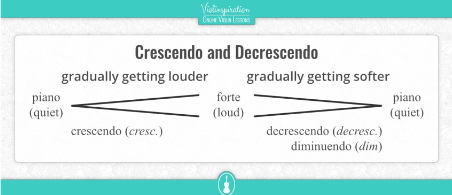 2. The more intensely fearful a person is, the more likely they are going to act out in a violent manner. Over 80% of violence exhibited by mentally ill people is a result of a paranoid delusion. A persecutory delusion is the one symptom that is most likely to result in violence. Persecutory delusions involve the belief someone is mistreating them, spying on them, or attempting to harm them.
2. The more intensely fearful a person is, the more likely they are going to act out in a violent manner. Over 80% of violence exhibited by mentally ill people is a result of a paranoid delusion. A persecutory delusion is the one symptom that is most likely to result in violence. Persecutory delusions involve the belief someone is mistreating them, spying on them, or attempting to harm them.  3. The doctor made the right decision initially but then backed down on the wife’s request. The doctor had seen about 500 paranoid schizophrenics previously. The wife had seen one. The doctor did not have the emotional attachment the wife had to the client. The doctor should have gone with his initial thought.
3. The doctor made the right decision initially but then backed down on the wife’s request. The doctor had seen about 500 paranoid schizophrenics previously. The wife had seen one. The doctor did not have the emotional attachment the wife had to the client. The doctor should have gone with his initial thought.
No malpractice lawsuit was brought in the above case. The lesson is to be aware of the risk paranoia creates. The rate of homicide during an individual’s first paranoid psychotic break is 15X higher than it is during any of the subsequent psychotic episodes. Men are 10X more likely to be violent than women, except among the mentally ill where women are violent as often as men. Lower intellectual functioning individuals are slightly more likely to be violent.
Men are 10X more likely to be violent than women, except among the mentally ill where women are violent as often as men. Lower intellectual functioning individuals are slightly more likely to be violent.
Probability by law means greater than 50%. Possibility means less than 50%. (To say something is possible is one thing. To say something is probable is quite another.) So, when it is suggested that there is a strong probability that somebody would behave in a certain way, they are referring to greater than 50%. The greater the magnitude of the harm, the less possibility of violence you need to commit someone. For example, the fear that someone might shoot someone, is much easier to commit for than the fear they would hit someone.
Hallucinations that invoke anger and anxiety are more likely to result in violence. Command hallucinations are associated with an increased risk of violence. (Command hallucinations instruct individuals to engage in certain actions.) Run of the mill hallucinations (voices or visions) do not have a strong association with violence.People who have not established a strategy for coping with their hallucinations are a greater risk of violence. Command hallucinations that occur in conjunction with a delusion are the most dangerous.
Hallucinations involve hearing, seeing, smelling, or feeling things that are not really there. For example, a person with Alzheimer's may see children playing in the living room when no children exist. Delusions are false beliefs that the person thinks are real. For example: Someone is trying to kill them. Hallucinations are a sensation experience. Delusions are beliefs.
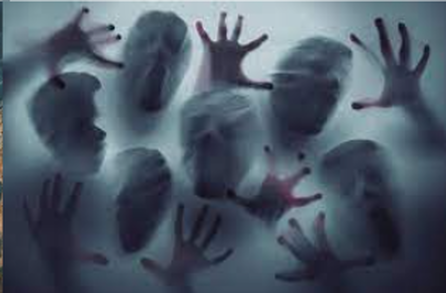

A voice telling you to hurt someone, would be a command hallucination. If, in addition, you believe that person was the devil, that would be a delusion. The most frequent command hallucination is to harm oneself.
5. If they recognize the voice, they are more likely to act out violently (for example if it is their sibling, parent, or ex’s voice they are hearing). 60% of people who have command hallucinations recognize the voice.
6. A person in a manic phase or a stage of believing they are better than others (egotistical), they are more likely to act out. (Manic people are excitable and have lots of energy. They can also be very irritable.)
7. Delusions are more likely to bring about violence than hallucinations. The delusion (belief) that others wish you harm increases the risk of violence 8. With the same threat, a male is more likely to respond with violence than a female.
8. With the same threat, a male is more likely to respond with violence than a female.
9. A specific delusion is more likely to result in violence than a vague delusion. For example, there was a case of an individual who felt like people driving red cars were dangerous too him. It became particularly concerning when he said that if their license plate had an “H” on it, it meant “hitman,” and he needed to take action.
When you are assessing risk of violence, look at the static and the dynamic factors. Static factors are factors that do no not change.
Static (stable) factors include: mental illness, living environment, neighborhood, sex, and cognitive status.
Dynamic (changeable) factors: An acute mental health state, access to weapons, and resources available or unavailable at the moment. 
 The three factors most associated with violence in the previous six months are:
The three factors most associated with violence in the previous six months are:
Use of alcohol in the last 6 months.
Violence within the past 6 months
Being victimized in the past 6 months.
Another static factor is a history of violence. You can’t change that. Rather than diverting people from the criminal justice system, it is sometimes better for them to go through it, from both a behavioral perspective and so there is also enforcement of taking medication.
A dynamic factor is able to be altered: For example: Living with mother. Schizophrenics are more likely to kill their mother than anyone else because of her unconditional love; a mother is the one person who never turns them away.
Tarasoff warning: When a therapist has an awareness that a client is at risk to hurt another person they have a duty to warn that person.
With regard to mood disorders, manic people have more assaults than depressed people. They are most likely to attack their parents, as their parents are ultimately the limit setters. Depressed people are more likely to commit filicide, which is killing their children. The rationalization for a depressed woman would be worry over what will happen to her children, and the rationalization that the children are better off going with her. It is estimated that women who experience depression, 1 in 40 has had thoughts of killing their children. Schizophrenics, as mentioned earlier, are most likely to kill their mother. Having them not live together reduces risk. For manic individuals, substance use increases the risk of violence. Once again, the violence is most often directed at individuals who set limits on their behavior. Mentally ill people are much more likely to be violent toward family members than strangers. 20% of caregivers taking care of mentally ill family members report having been assaulted by the mentally ill family member in the past year. Being a family caregiver is a risky business. Financial dependence on the caregiver increases the risk of violence. One way to reduce this risk is by having a payee involved who doles out the money. Public housing not with the family, also reduces the risk of violence.
For manic individuals, substance use increases the risk of violence. Once again, the violence is most often directed at individuals who set limits on their behavior. Mentally ill people are much more likely to be violent toward family members than strangers. 20% of caregivers taking care of mentally ill family members report having been assaulted by the mentally ill family member in the past year. Being a family caregiver is a risky business. Financial dependence on the caregiver increases the risk of violence. One way to reduce this risk is by having a payee involved who doles out the money. Public housing not with the family, also reduces the risk of violence.
Impulsivity, as a personality issue, increases the risk of both homicide and suicide. Antisocial Personality Disorder and Borderline Personality Disorder are the two personality issues which have the highest rates of violence.
To assess violence, you want to go through their history and look at each reported scenario. This will give you an idea of the factors that seem to set the person off. Past violence is the best predictor of future violence.
 Affective aggression is demonstrated through threats and outbursts. Affective aggression is triggered in the limbic system as an emotional response. People who were abused as a child are more likely to react with emotional aggression.
Affective aggression is demonstrated through threats and outbursts. Affective aggression is triggered in the limbic system as an emotional response. People who were abused as a child are more likely to react with emotional aggression.
 Predatory aggression is demonstrated by antisocial actions. When you look at the case studies of individuals who have assassinated presidents in the United States, not one of them made a direct threat on the president’s life. The assassinations involved planning and predatory aggression with no direct warning to the vicitm. Predatory aggression is processed in the cortex through planning. Predatory aggressors do research and planning.
Predatory aggression is demonstrated by antisocial actions. When you look at the case studies of individuals who have assassinated presidents in the United States, not one of them made a direct threat on the president’s life. The assassinations involved planning and predatory aggression with no direct warning to the vicitm. Predatory aggression is processed in the cortex through planning. Predatory aggressors do research and planning.
Fear and anger are the two emotions that are most likely to precede violence. This is true in both psychotic and nonpsychotic individuals. In a psychiatric hospital setting, the most common behavior that precedes the violent act are yelling, swearing, and standing too close to others.
 Which brings me to my thoughts on homeless encampments. The ACLU argues that it’s an individual’s right to be homeless. I would not argue with this. However, I would argue that people are not entitled to tent on land owned by others, without permission. Homeless encampments house large numbers of mentally ill individuals. Being mentally ill increases the risk of violence 3 times. Many in the encampment are abusing substances. People who abuse substances are 7 times more likely to be violent. People who think that the encampment has the right to exist generally are fortunate to live in a neighborhood where that encampment isn’t in their backyard. How do you think people in homeless encampments survive? They steal from stores and people in the neighborhood. We also need to protect the rights of the working class people in the neighborhood. Don’t they have the right to raise their children in a safe neighborhood. As a therapist, I’ve helped people coming out of extreme poverty. People tell me 100% of the women in the homeless encampments have been sexually assaulted. This isn’t an expression of freedom. It’s a lack of resources.
Which brings me to my thoughts on homeless encampments. The ACLU argues that it’s an individual’s right to be homeless. I would not argue with this. However, I would argue that people are not entitled to tent on land owned by others, without permission. Homeless encampments house large numbers of mentally ill individuals. Being mentally ill increases the risk of violence 3 times. Many in the encampment are abusing substances. People who abuse substances are 7 times more likely to be violent. People who think that the encampment has the right to exist generally are fortunate to live in a neighborhood where that encampment isn’t in their backyard. How do you think people in homeless encampments survive? They steal from stores and people in the neighborhood. We also need to protect the rights of the working class people in the neighborhood. Don’t they have the right to raise their children in a safe neighborhood. As a therapist, I’ve helped people coming out of extreme poverty. People tell me 100% of the women in the homeless encampments have been sexually assaulted. This isn’t an expression of freedom. It’s a lack of resources.
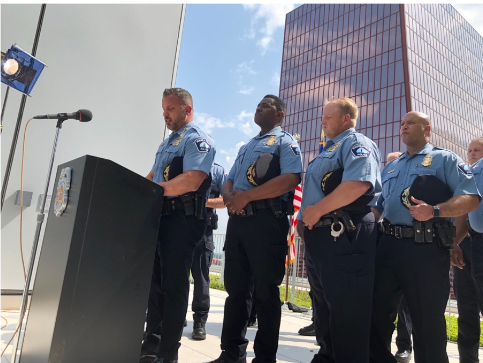 We closed institutions without creating community resources for mentally ill people. The result has been large homeless encampments.
We closed institutions without creating community resources for mentally ill people. The result has been large homeless encampments.
We’ve closed juvenile treatment centers without replacing them alternative forms of placement for struggling adolescents. The result is they go to court and are released back into the community in a system that lacks accountability. I agree with Minneapolis Police Chief Brian O’Hara’s perspective on the dilemma. He shared: "We're getting sometimes as many Kias and Hyundais stolen in a week as what used to happen in an entire year. A small group of kids over and over.” He went on the explain we don’t have places to send them for either accountability or help.
We are dealing with a lack of placements outside of incarceration. We have the option of either creating resources or continuing to watch the problem grow. Whenever there’s a shooting Democrats say it’s a gun issue and Republicans say it’s not a gun issue it’s a mental illness issue. Neither party is addressing the mental illness issue.
Thanks for listening,
Frank
 I had another interview for an investigative show this past week. I will let you know when it will air. It likely won’t show for 6 months and I am to keep secret about it until it gets closer.
I had another interview for an investigative show this past week. I will let you know when it will air. It likely won’t show for 6 months and I am to keep secret about it until it gets closer.
 Saturday, August 3, 2024, Forensic Psychologist &True Crime Author, Frank Weber, will be at Wabasha Brewing in St.Paul, Minnesota, from 12:30 to 5:30 p.m. He’ll speak from 2:00 to 3:00 p.m. about Forensic psychology and the writing of True Crime mysteries. Frank will demonstrate a live lie detector test (volunteer a friend). Frank will discuss some of the bizarre facts related to his newest true crime novel, Scandal of Vandals, based on a case where an attorney was accused of hiring a hitman to kill his wife. It was once declared “the crime of the century.” Enjoy a cold brew and ask forensic questions. Wabasha Brewing is located at: 429 Wabasha Street South, St Paul, Minnesota, 55107
Saturday, August 3, 2024, Forensic Psychologist &True Crime Author, Frank Weber, will be at Wabasha Brewing in St.Paul, Minnesota, from 12:30 to 5:30 p.m. He’ll speak from 2:00 to 3:00 p.m. about Forensic psychology and the writing of True Crime mysteries. Frank will demonstrate a live lie detector test (volunteer a friend). Frank will discuss some of the bizarre facts related to his newest true crime novel, Scandal of Vandals, based on a case where an attorney was accused of hiring a hitman to kill his wife. It was once declared “the crime of the century.” Enjoy a cold brew and ask forensic questions. Wabasha Brewing is located at: 429 Wabasha Street South, St Paul, Minnesota, 55107
 Monday, August 5, 2024, Beaver Island Brewing Company is hosting the St.Cloud opening of Scandal of Vandals from 4:30 to 8:30 p.m.. Frank will speak from 6:00 p.m. to 7:00 p,m. on his newest book, Scandal of Vandals. It is based on a mystery once touted as “the crime of the century.” A prominent Twin Cities attorney was accused of hiring a hitman to kill his wife. Frank will share some of the intriguing information he uncovered related to the case and give a live demonstration of a lie detector test (volunteer a friend). There is a scene at Beaver Island in the book. It’s a chance to experience the story, on location, while enjoying a cold beverage. The Beaver Island Brewing Company is located at 216 6th Avenue South, St. Cloud, Minnesota on Division.
Monday, August 5, 2024, Beaver Island Brewing Company is hosting the St.Cloud opening of Scandal of Vandals from 4:30 to 8:30 p.m.. Frank will speak from 6:00 p.m. to 7:00 p,m. on his newest book, Scandal of Vandals. It is based on a mystery once touted as “the crime of the century.” A prominent Twin Cities attorney was accused of hiring a hitman to kill his wife. Frank will share some of the intriguing information he uncovered related to the case and give a live demonstration of a lie detector test (volunteer a friend). There is a scene at Beaver Island in the book. It’s a chance to experience the story, on location, while enjoying a cold beverage. The Beaver Island Brewing Company is located at 216 6th Avenue South, St. Cloud, Minnesota on Division.
 Saturday, August 10, 2024 from 9:00 to 4:00 p.m. Frank will be at Art of the Lakes in Battle Lake selling and signing all of his books including his newest, Scandal of Vandals. The event is located at Railroad Park in Battle Lake, Minnesota.
Saturday, August 10, 2024 from 9:00 to 4:00 p.m. Frank will be at Art of the Lakes in Battle Lake selling and signing all of his books including his newest, Scandal of Vandals. The event is located at Railroad Park in Battle Lake, Minnesota.
 Tuesday, August 13, 2024, Frank Weber will be speaking to the Words and Wine Book Club at Porky’s Bar in Hillman (not to be confused with Wine and Words in Brainerd) from 12:00 noon to 12:45 p.m. Frank will be discussing Black and Blue and will be addressing questions on forensics and all of his true crime mysteries. Brothers Porky’s Pine Bar and Grill is located at 36972 Minnesota Highway 27 #3, Hillman, Minnesota, 56338
Tuesday, August 13, 2024, Frank Weber will be speaking to the Words and Wine Book Club at Porky’s Bar in Hillman (not to be confused with Wine and Words in Brainerd) from 12:00 noon to 12:45 p.m. Frank will be discussing Black and Blue and will be addressing questions on forensics and all of his true crime mysteries. Brothers Porky’s Pine Bar and Grill is located at 36972 Minnesota Highway 27 #3, Hillman, Minnesota, 56338
 Saturday and Sunday, August 17 & 18 , 2024, Forensic Psychologist & True Crime Author, Frank F. Weber, will be at the 29th Annual Venetian Festival Arts & Crafts Fair in Lake Geneva, Wisconsin. It’s a chance to ask Frank questions about his newest true crime novel, Scandal of Vandals, based on a case where an attorney was accused of hiring a hitman to kill his wife. It was once declared “the crime of the century.” Frank will be signing and selling books on Saturday from 10:00 to 5:00 p.m. on Saturday and on Sunday from 10:00 to 4:00 p.m. The Lake Geneva Arts and Crafts is located at: Library Park, Geneva Lake Front, Main Street, Highway 50 West, Lake Geneva, Wisconsin.
Saturday and Sunday, August 17 & 18 , 2024, Forensic Psychologist & True Crime Author, Frank F. Weber, will be at the 29th Annual Venetian Festival Arts & Crafts Fair in Lake Geneva, Wisconsin. It’s a chance to ask Frank questions about his newest true crime novel, Scandal of Vandals, based on a case where an attorney was accused of hiring a hitman to kill his wife. It was once declared “the crime of the century.” Frank will be signing and selling books on Saturday from 10:00 to 5:00 p.m. on Saturday and on Sunday from 10:00 to 4:00 p.m. The Lake Geneva Arts and Crafts is located at: Library Park, Geneva Lake Front, Main Street, Highway 50 West, Lake Geneva, Wisconsin.
 Tuesday, August 20, 2024, Forensic Psychologist & True Crime Author, Frank F. Weber, will be at Boom Island Brewing Company & Taproom in Minnetonka speaking from 6:00 to 7:00 p.m. Frank will discuss some of the bizarre facts related to his newest true crime novel, Scandal of Vandals, based on a case where a Twin City attorney was accused of hiring a hitman to kill his wife. It was once declared “the crime of the century.” Frank will demonstrate a live lie detector test (volunteer a friend). Enjoy a cold brew and ask forensic questions. Frank will be at Boom Island from 4:30 p.m. to 8:30 p.m. answering questions on his work, signing and selling his books, and sharing what they get right and wrong on shows. Boom Island Brewing Company &Taproom is located at: 5959 Baker Road #320, Minnetonka, Minnesota, 55345.
Tuesday, August 20, 2024, Forensic Psychologist & True Crime Author, Frank F. Weber, will be at Boom Island Brewing Company & Taproom in Minnetonka speaking from 6:00 to 7:00 p.m. Frank will discuss some of the bizarre facts related to his newest true crime novel, Scandal of Vandals, based on a case where a Twin City attorney was accused of hiring a hitman to kill his wife. It was once declared “the crime of the century.” Frank will demonstrate a live lie detector test (volunteer a friend). Enjoy a cold brew and ask forensic questions. Frank will be at Boom Island from 4:30 p.m. to 8:30 p.m. answering questions on his work, signing and selling his books, and sharing what they get right and wrong on shows. Boom Island Brewing Company &Taproom is located at: 5959 Baker Road #320, Minnetonka, Minnesota, 55345.
 Thursday, August 22 , 2024, Forensic Psychologist & True Crime Author, Frank F. Weber, will be at Chankaska Creek Ranch Winery & Distillery speaking from 6:00 to 7:00 p.m. Frank will discuss some of the bizarre facts related to his newest true crime novel, Scandal of Vandals, based on a case where a Twin City attorney was accused of hiring a hitman to kill his wife. It was once declared “the crime of the century,” and much of the story takes place in southern Minnesota. Frank will demonstrate a live lie detector test (volunteer a friend). Frank will be at Chankaska Winery from 4:00 p.m. to 8:00 p.m., answering questions on his work, signing and selling his books, and discussing the latest forensic tools. Chankaska Creek Ranch, Winery & Distillery is located at: 1179 East Pearl Street, Kasota, Minnesota, 56050.
Thursday, August 22 , 2024, Forensic Psychologist & True Crime Author, Frank F. Weber, will be at Chankaska Creek Ranch Winery & Distillery speaking from 6:00 to 7:00 p.m. Frank will discuss some of the bizarre facts related to his newest true crime novel, Scandal of Vandals, based on a case where a Twin City attorney was accused of hiring a hitman to kill his wife. It was once declared “the crime of the century,” and much of the story takes place in southern Minnesota. Frank will demonstrate a live lie detector test (volunteer a friend). Frank will be at Chankaska Winery from 4:00 p.m. to 8:00 p.m., answering questions on his work, signing and selling his books, and discussing the latest forensic tools. Chankaska Creek Ranch, Winery & Distillery is located at: 1179 East Pearl Street, Kasota, Minnesota, 56050.
Wednesday, August 28, 2024, Frank Weber, Forensic Psychologist will be speaking to the Minnesota Sex Offender Supervision Agents at Camp Ripley from 8:00 a.m. to 10:00 p.m. Frank will present on Creating Change by Synchronizing Supervision and Therapy. The conference is being held at: Camp Ripley 15000 Highway 115, Little Falls, Minnesota, 56345.
 Friday, August 30 , 2024, Forensic Psychologist & True Crime Author, Frank F. Weber, will be at Roundhouse Brewing Company in Nisswa speaking from 5:00 to 6:00 p.m. Frank will discuss some of the bizarre facts related to his newest true crime novel, Scandal of Vandals, based on a case where a Twin City attorney was accused of hiring a hitman to kill his wife. It was once declared “the crime of the century.” Frank will demonstrate a live lie detector test (volunteer a friend). Enjoy a cold brew and ask forensic questions. Frank will be at Roundhouse Brewery from 4:00 p.m. to 8:00 p.m. answering questions on his work, signing and selling his books. Frank will be with the audience by the stage, selling books and enjoying the music after speaking. Roundhouse Brewing Company is located at 23836 Smiley Road, Nisswa, Minnesota, 56468.
Friday, August 30 , 2024, Forensic Psychologist & True Crime Author, Frank F. Weber, will be at Roundhouse Brewing Company in Nisswa speaking from 5:00 to 6:00 p.m. Frank will discuss some of the bizarre facts related to his newest true crime novel, Scandal of Vandals, based on a case where a Twin City attorney was accused of hiring a hitman to kill his wife. It was once declared “the crime of the century.” Frank will demonstrate a live lie detector test (volunteer a friend). Enjoy a cold brew and ask forensic questions. Frank will be at Roundhouse Brewery from 4:00 p.m. to 8:00 p.m. answering questions on his work, signing and selling his books. Frank will be with the audience by the stage, selling books and enjoying the music after speaking. Roundhouse Brewing Company is located at 23836 Smiley Road, Nisswa, Minnesota, 56468.
 Example of an actual case: A man begins making paranoid statements about conspiracies at home. He feels his co-workers have it in for him and the paranoid comments escalate. He is fired from his work. His wife attempts to get him to go to the hospital for a psychiatric evaluation, but he refuses. Finally, she calls his two brothers, and they physically make him go to a psychiatric hospital. The psychiatrist gives him Thorazine and wants to place him inpatient hospitalization. Now that he is facing a hospital stay, he states he is willing to take medication. He takes a dose of Thorazine at the hospital. The doctor is informed that the man has no history of violence and subsequently releases him. When he gets home, he refuses to take the second dose of Thorazine, telling his wife the medication is poison. He seems calmer, so they make love that night. After his wife falls asleep, he starts considering that this was an elaborate set-up, and his wife has become part of the conspiracy against him. While she lies sleeping next to him, he gets a knife and stabs her to death. Their 12-year-old daughter comes into their bedroom the next morning and finds her dad still lying in bed with her murdered mom. He begs her not to tell anybody, but she runs to the neighbors and calls the police.
Example of an actual case: A man begins making paranoid statements about conspiracies at home. He feels his co-workers have it in for him and the paranoid comments escalate. He is fired from his work. His wife attempts to get him to go to the hospital for a psychiatric evaluation, but he refuses. Finally, she calls his two brothers, and they physically make him go to a psychiatric hospital. The psychiatrist gives him Thorazine and wants to place him inpatient hospitalization. Now that he is facing a hospital stay, he states he is willing to take medication. He takes a dose of Thorazine at the hospital. The doctor is informed that the man has no history of violence and subsequently releases him. When he gets home, he refuses to take the second dose of Thorazine, telling his wife the medication is poison. He seems calmer, so they make love that night. After his wife falls asleep, he starts considering that this was an elaborate set-up, and his wife has become part of the conspiracy against him. While she lies sleeping next to him, he gets a knife and stabs her to death. Their 12-year-old daughter comes into their bedroom the next morning and finds her dad still lying in bed with her murdered mom. He begs her not to tell anybody, but she runs to the neighbors and calls the police. When psychiatrists are surveyed about this case, more than 80% say the psychiatrist did not do anything wrong by sending the man home.
The man had no history of violence.
He would not accept a voluntary commitment to a hospital.
 When a group of average people (non-psychiatrists) are surveyed about the case, more than 80% state the psychiatrist made a mistake in sending the man home. It is important to note--these are the people who will be on the jury.
When a group of average people (non-psychiatrists) are surveyed about the case, more than 80% state the psychiatrist made a mistake in sending the man home. It is important to note--these are the people who will be on the jury. We struggle with hindsight bias. Even juries struggle with hindsight bias. When they have the information on how the situation played out, they are more likely to hold someone responsible. So, what are the factors that could have been considered that were not?
Violence risk factors:
1. A building crescendo of paranoia is considered a risk of violence.
 2. The more intensely fearful a person is, the more likely they are going to act out in a violent manner. Over 80% of violence exhibited by mentally ill people is a result of a paranoid delusion. A persecutory delusion is the one symptom that is most likely to result in violence. Persecutory delusions involve the belief someone is mistreating them, spying on them, or attempting to harm them.
2. The more intensely fearful a person is, the more likely they are going to act out in a violent manner. Over 80% of violence exhibited by mentally ill people is a result of a paranoid delusion. A persecutory delusion is the one symptom that is most likely to result in violence. Persecutory delusions involve the belief someone is mistreating them, spying on them, or attempting to harm them.  3. The doctor made the right decision initially but then backed down on the wife’s request. The doctor had seen about 500 paranoid schizophrenics previously. The wife had seen one. The doctor did not have the emotional attachment the wife had to the client. The doctor should have gone with his initial thought.
3. The doctor made the right decision initially but then backed down on the wife’s request. The doctor had seen about 500 paranoid schizophrenics previously. The wife had seen one. The doctor did not have the emotional attachment the wife had to the client. The doctor should have gone with his initial thought.No malpractice lawsuit was brought in the above case. The lesson is to be aware of the risk paranoia creates. The rate of homicide during an individual’s first paranoid psychotic break is 15X higher than it is during any of the subsequent psychotic episodes.
 Men are 10X more likely to be violent than women, except among the mentally ill where women are violent as often as men. Lower intellectual functioning individuals are slightly more likely to be violent.
Men are 10X more likely to be violent than women, except among the mentally ill where women are violent as often as men. Lower intellectual functioning individuals are slightly more likely to be violent. Probability by law means greater than 50%. Possibility means less than 50%. (To say something is possible is one thing. To say something is probable is quite another.) So, when it is suggested that there is a strong probability that somebody would behave in a certain way, they are referring to greater than 50%. The greater the magnitude of the harm, the less possibility of violence you need to commit someone. For example, the fear that someone might shoot someone, is much easier to commit for than the fear they would hit someone.
Hallucinations that invoke anger and anxiety are more likely to result in violence. Command hallucinations are associated with an increased risk of violence. (Command hallucinations instruct individuals to engage in certain actions.) Run of the mill hallucinations (voices or visions) do not have a strong association with violence.People who have not established a strategy for coping with their hallucinations are a greater risk of violence. Command hallucinations that occur in conjunction with a delusion are the most dangerous.
Hallucinations involve hearing, seeing, smelling, or feeling things that are not really there. For example, a person with Alzheimer's may see children playing in the living room when no children exist. Delusions are false beliefs that the person thinks are real. For example: Someone is trying to kill them. Hallucinations are a sensation experience. Delusions are beliefs.



A voice telling you to hurt someone, would be a command hallucination. If, in addition, you believe that person was the devil, that would be a delusion. The most frequent command hallucination is to harm oneself.
5. If they recognize the voice, they are more likely to act out violently (for example if it is their sibling, parent, or ex’s voice they are hearing). 60% of people who have command hallucinations recognize the voice.
6. A person in a manic phase or a stage of believing they are better than others (egotistical), they are more likely to act out. (Manic people are excitable and have lots of energy. They can also be very irritable.)
7. Delusions are more likely to bring about violence than hallucinations. The delusion (belief) that others wish you harm increases the risk of violence
 8. With the same threat, a male is more likely to respond with violence than a female.
8. With the same threat, a male is more likely to respond with violence than a female. 9. A specific delusion is more likely to result in violence than a vague delusion. For example, there was a case of an individual who felt like people driving red cars were dangerous too him. It became particularly concerning when he said that if their license plate had an “H” on it, it meant “hitman,” and he needed to take action.
When you are assessing risk of violence, look at the static and the dynamic factors. Static factors are factors that do no not change.
Static (stable) factors include: mental illness, living environment, neighborhood, sex, and cognitive status.
Dynamic (changeable) factors: An acute mental health state, access to weapons, and resources available or unavailable at the moment.

 The three factors most associated with violence in the previous six months are:
The three factors most associated with violence in the previous six months are:Use of alcohol in the last 6 months.
Violence within the past 6 months
Being victimized in the past 6 months.
Another static factor is a history of violence. You can’t change that. Rather than diverting people from the criminal justice system, it is sometimes better for them to go through it, from both a behavioral perspective and so there is also enforcement of taking medication.
A dynamic factor is able to be altered: For example: Living with mother. Schizophrenics are more likely to kill their mother than anyone else because of her unconditional love; a mother is the one person who never turns them away.
Tarasoff warning: When a therapist has an awareness that a client is at risk to hurt another person they have a duty to warn that person.
With regard to mood disorders, manic people have more assaults than depressed people. They are most likely to attack their parents, as their parents are ultimately the limit setters. Depressed people are more likely to commit filicide, which is killing their children. The rationalization for a depressed woman would be worry over what will happen to her children, and the rationalization that the children are better off going with her. It is estimated that women who experience depression, 1 in 40 has had thoughts of killing their children. Schizophrenics, as mentioned earlier, are most likely to kill their mother. Having them not live together reduces risk.
 For manic individuals, substance use increases the risk of violence. Once again, the violence is most often directed at individuals who set limits on their behavior. Mentally ill people are much more likely to be violent toward family members than strangers. 20% of caregivers taking care of mentally ill family members report having been assaulted by the mentally ill family member in the past year. Being a family caregiver is a risky business. Financial dependence on the caregiver increases the risk of violence. One way to reduce this risk is by having a payee involved who doles out the money. Public housing not with the family, also reduces the risk of violence.
For manic individuals, substance use increases the risk of violence. Once again, the violence is most often directed at individuals who set limits on their behavior. Mentally ill people are much more likely to be violent toward family members than strangers. 20% of caregivers taking care of mentally ill family members report having been assaulted by the mentally ill family member in the past year. Being a family caregiver is a risky business. Financial dependence on the caregiver increases the risk of violence. One way to reduce this risk is by having a payee involved who doles out the money. Public housing not with the family, also reduces the risk of violence. Impulsivity, as a personality issue, increases the risk of both homicide and suicide. Antisocial Personality Disorder and Borderline Personality Disorder are the two personality issues which have the highest rates of violence.
To assess violence, you want to go through their history and look at each reported scenario. This will give you an idea of the factors that seem to set the person off. Past violence is the best predictor of future violence.
 Affective aggression is demonstrated through threats and outbursts. Affective aggression is triggered in the limbic system as an emotional response. People who were abused as a child are more likely to react with emotional aggression.
Affective aggression is demonstrated through threats and outbursts. Affective aggression is triggered in the limbic system as an emotional response. People who were abused as a child are more likely to react with emotional aggression. Predatory aggression is demonstrated by antisocial actions. When you look at the case studies of individuals who have assassinated presidents in the United States, not one of them made a direct threat on the president’s life. The assassinations involved planning and predatory aggression with no direct warning to the vicitm. Predatory aggression is processed in the cortex through planning. Predatory aggressors do research and planning.
Predatory aggression is demonstrated by antisocial actions. When you look at the case studies of individuals who have assassinated presidents in the United States, not one of them made a direct threat on the president’s life. The assassinations involved planning and predatory aggression with no direct warning to the vicitm. Predatory aggression is processed in the cortex through planning. Predatory aggressors do research and planning. Fear and anger are the two emotions that are most likely to precede violence. This is true in both psychotic and nonpsychotic individuals. In a psychiatric hospital setting, the most common behavior that precedes the violent act are yelling, swearing, and standing too close to others.
 Which brings me to my thoughts on homeless encampments. The ACLU argues that it’s an individual’s right to be homeless. I would not argue with this. However, I would argue that people are not entitled to tent on land owned by others, without permission. Homeless encampments house large numbers of mentally ill individuals. Being mentally ill increases the risk of violence 3 times. Many in the encampment are abusing substances. People who abuse substances are 7 times more likely to be violent. People who think that the encampment has the right to exist generally are fortunate to live in a neighborhood where that encampment isn’t in their backyard. How do you think people in homeless encampments survive? They steal from stores and people in the neighborhood. We also need to protect the rights of the working class people in the neighborhood. Don’t they have the right to raise their children in a safe neighborhood. As a therapist, I’ve helped people coming out of extreme poverty. People tell me 100% of the women in the homeless encampments have been sexually assaulted. This isn’t an expression of freedom. It’s a lack of resources.
Which brings me to my thoughts on homeless encampments. The ACLU argues that it’s an individual’s right to be homeless. I would not argue with this. However, I would argue that people are not entitled to tent on land owned by others, without permission. Homeless encampments house large numbers of mentally ill individuals. Being mentally ill increases the risk of violence 3 times. Many in the encampment are abusing substances. People who abuse substances are 7 times more likely to be violent. People who think that the encampment has the right to exist generally are fortunate to live in a neighborhood where that encampment isn’t in their backyard. How do you think people in homeless encampments survive? They steal from stores and people in the neighborhood. We also need to protect the rights of the working class people in the neighborhood. Don’t they have the right to raise their children in a safe neighborhood. As a therapist, I’ve helped people coming out of extreme poverty. People tell me 100% of the women in the homeless encampments have been sexually assaulted. This isn’t an expression of freedom. It’s a lack of resources.  We closed institutions without creating community resources for mentally ill people. The result has been large homeless encampments.
We closed institutions without creating community resources for mentally ill people. The result has been large homeless encampments. We’ve closed juvenile treatment centers without replacing them alternative forms of placement for struggling adolescents. The result is they go to court and are released back into the community in a system that lacks accountability. I agree with Minneapolis Police Chief Brian O’Hara’s perspective on the dilemma. He shared: "We're getting sometimes as many Kias and Hyundais stolen in a week as what used to happen in an entire year. A small group of kids over and over.” He went on the explain we don’t have places to send them for either accountability or help.
We are dealing with a lack of placements outside of incarceration. We have the option of either creating resources or continuing to watch the problem grow. Whenever there’s a shooting Democrats say it’s a gun issue and Republicans say it’s not a gun issue it’s a mental illness issue. Neither party is addressing the mental illness issue.
Thanks for listening,
Frank
 I had another interview for an investigative show this past week. I will let you know when it will air. It likely won’t show for 6 months and I am to keep secret about it until it gets closer.
I had another interview for an investigative show this past week. I will let you know when it will air. It likely won’t show for 6 months and I am to keep secret about it until it gets closer.  Saturday, August 3, 2024, Forensic Psychologist &True Crime Author, Frank Weber, will be at Wabasha Brewing in St.Paul, Minnesota, from 12:30 to 5:30 p.m. He’ll speak from 2:00 to 3:00 p.m. about Forensic psychology and the writing of True Crime mysteries. Frank will demonstrate a live lie detector test (volunteer a friend). Frank will discuss some of the bizarre facts related to his newest true crime novel, Scandal of Vandals, based on a case where an attorney was accused of hiring a hitman to kill his wife. It was once declared “the crime of the century.” Enjoy a cold brew and ask forensic questions. Wabasha Brewing is located at: 429 Wabasha Street South, St Paul, Minnesota, 55107
Saturday, August 3, 2024, Forensic Psychologist &True Crime Author, Frank Weber, will be at Wabasha Brewing in St.Paul, Minnesota, from 12:30 to 5:30 p.m. He’ll speak from 2:00 to 3:00 p.m. about Forensic psychology and the writing of True Crime mysteries. Frank will demonstrate a live lie detector test (volunteer a friend). Frank will discuss some of the bizarre facts related to his newest true crime novel, Scandal of Vandals, based on a case where an attorney was accused of hiring a hitman to kill his wife. It was once declared “the crime of the century.” Enjoy a cold brew and ask forensic questions. Wabasha Brewing is located at: 429 Wabasha Street South, St Paul, Minnesota, 55107 Monday, August 5, 2024, Beaver Island Brewing Company is hosting the St.Cloud opening of Scandal of Vandals from 4:30 to 8:30 p.m.. Frank will speak from 6:00 p.m. to 7:00 p,m. on his newest book, Scandal of Vandals. It is based on a mystery once touted as “the crime of the century.” A prominent Twin Cities attorney was accused of hiring a hitman to kill his wife. Frank will share some of the intriguing information he uncovered related to the case and give a live demonstration of a lie detector test (volunteer a friend). There is a scene at Beaver Island in the book. It’s a chance to experience the story, on location, while enjoying a cold beverage. The Beaver Island Brewing Company is located at 216 6th Avenue South, St. Cloud, Minnesota on Division.
Monday, August 5, 2024, Beaver Island Brewing Company is hosting the St.Cloud opening of Scandal of Vandals from 4:30 to 8:30 p.m.. Frank will speak from 6:00 p.m. to 7:00 p,m. on his newest book, Scandal of Vandals. It is based on a mystery once touted as “the crime of the century.” A prominent Twin Cities attorney was accused of hiring a hitman to kill his wife. Frank will share some of the intriguing information he uncovered related to the case and give a live demonstration of a lie detector test (volunteer a friend). There is a scene at Beaver Island in the book. It’s a chance to experience the story, on location, while enjoying a cold beverage. The Beaver Island Brewing Company is located at 216 6th Avenue South, St. Cloud, Minnesota on Division.  Saturday, August 10, 2024 from 9:00 to 4:00 p.m. Frank will be at Art of the Lakes in Battle Lake selling and signing all of his books including his newest, Scandal of Vandals. The event is located at Railroad Park in Battle Lake, Minnesota.
Saturday, August 10, 2024 from 9:00 to 4:00 p.m. Frank will be at Art of the Lakes in Battle Lake selling and signing all of his books including his newest, Scandal of Vandals. The event is located at Railroad Park in Battle Lake, Minnesota. Tuesday, August 13, 2024, Frank Weber will be speaking to the Words and Wine Book Club at Porky’s Bar in Hillman (not to be confused with Wine and Words in Brainerd) from 12:00 noon to 12:45 p.m. Frank will be discussing Black and Blue and will be addressing questions on forensics and all of his true crime mysteries. Brothers Porky’s Pine Bar and Grill is located at 36972 Minnesota Highway 27 #3, Hillman, Minnesota, 56338
Tuesday, August 13, 2024, Frank Weber will be speaking to the Words and Wine Book Club at Porky’s Bar in Hillman (not to be confused with Wine and Words in Brainerd) from 12:00 noon to 12:45 p.m. Frank will be discussing Black and Blue and will be addressing questions on forensics and all of his true crime mysteries. Brothers Porky’s Pine Bar and Grill is located at 36972 Minnesota Highway 27 #3, Hillman, Minnesota, 56338 Saturday and Sunday, August 17 & 18 , 2024, Forensic Psychologist & True Crime Author, Frank F. Weber, will be at the 29th Annual Venetian Festival Arts & Crafts Fair in Lake Geneva, Wisconsin. It’s a chance to ask Frank questions about his newest true crime novel, Scandal of Vandals, based on a case where an attorney was accused of hiring a hitman to kill his wife. It was once declared “the crime of the century.” Frank will be signing and selling books on Saturday from 10:00 to 5:00 p.m. on Saturday and on Sunday from 10:00 to 4:00 p.m. The Lake Geneva Arts and Crafts is located at: Library Park, Geneva Lake Front, Main Street, Highway 50 West, Lake Geneva, Wisconsin.
Saturday and Sunday, August 17 & 18 , 2024, Forensic Psychologist & True Crime Author, Frank F. Weber, will be at the 29th Annual Venetian Festival Arts & Crafts Fair in Lake Geneva, Wisconsin. It’s a chance to ask Frank questions about his newest true crime novel, Scandal of Vandals, based on a case where an attorney was accused of hiring a hitman to kill his wife. It was once declared “the crime of the century.” Frank will be signing and selling books on Saturday from 10:00 to 5:00 p.m. on Saturday and on Sunday from 10:00 to 4:00 p.m. The Lake Geneva Arts and Crafts is located at: Library Park, Geneva Lake Front, Main Street, Highway 50 West, Lake Geneva, Wisconsin.  Tuesday, August 20, 2024, Forensic Psychologist & True Crime Author, Frank F. Weber, will be at Boom Island Brewing Company & Taproom in Minnetonka speaking from 6:00 to 7:00 p.m. Frank will discuss some of the bizarre facts related to his newest true crime novel, Scandal of Vandals, based on a case where a Twin City attorney was accused of hiring a hitman to kill his wife. It was once declared “the crime of the century.” Frank will demonstrate a live lie detector test (volunteer a friend). Enjoy a cold brew and ask forensic questions. Frank will be at Boom Island from 4:30 p.m. to 8:30 p.m. answering questions on his work, signing and selling his books, and sharing what they get right and wrong on shows. Boom Island Brewing Company &Taproom is located at: 5959 Baker Road #320, Minnetonka, Minnesota, 55345.
Tuesday, August 20, 2024, Forensic Psychologist & True Crime Author, Frank F. Weber, will be at Boom Island Brewing Company & Taproom in Minnetonka speaking from 6:00 to 7:00 p.m. Frank will discuss some of the bizarre facts related to his newest true crime novel, Scandal of Vandals, based on a case where a Twin City attorney was accused of hiring a hitman to kill his wife. It was once declared “the crime of the century.” Frank will demonstrate a live lie detector test (volunteer a friend). Enjoy a cold brew and ask forensic questions. Frank will be at Boom Island from 4:30 p.m. to 8:30 p.m. answering questions on his work, signing and selling his books, and sharing what they get right and wrong on shows. Boom Island Brewing Company &Taproom is located at: 5959 Baker Road #320, Minnetonka, Minnesota, 55345. Thursday, August 22 , 2024, Forensic Psychologist & True Crime Author, Frank F. Weber, will be at Chankaska Creek Ranch Winery & Distillery speaking from 6:00 to 7:00 p.m. Frank will discuss some of the bizarre facts related to his newest true crime novel, Scandal of Vandals, based on a case where a Twin City attorney was accused of hiring a hitman to kill his wife. It was once declared “the crime of the century,” and much of the story takes place in southern Minnesota. Frank will demonstrate a live lie detector test (volunteer a friend). Frank will be at Chankaska Winery from 4:00 p.m. to 8:00 p.m., answering questions on his work, signing and selling his books, and discussing the latest forensic tools. Chankaska Creek Ranch, Winery & Distillery is located at: 1179 East Pearl Street, Kasota, Minnesota, 56050.
Thursday, August 22 , 2024, Forensic Psychologist & True Crime Author, Frank F. Weber, will be at Chankaska Creek Ranch Winery & Distillery speaking from 6:00 to 7:00 p.m. Frank will discuss some of the bizarre facts related to his newest true crime novel, Scandal of Vandals, based on a case where a Twin City attorney was accused of hiring a hitman to kill his wife. It was once declared “the crime of the century,” and much of the story takes place in southern Minnesota. Frank will demonstrate a live lie detector test (volunteer a friend). Frank will be at Chankaska Winery from 4:00 p.m. to 8:00 p.m., answering questions on his work, signing and selling his books, and discussing the latest forensic tools. Chankaska Creek Ranch, Winery & Distillery is located at: 1179 East Pearl Street, Kasota, Minnesota, 56050.Wednesday, August 28, 2024, Frank Weber, Forensic Psychologist will be speaking to the Minnesota Sex Offender Supervision Agents at Camp Ripley from 8:00 a.m. to 10:00 p.m. Frank will present on Creating Change by Synchronizing Supervision and Therapy. The conference is being held at: Camp Ripley 15000 Highway 115, Little Falls, Minnesota, 56345.
 Friday, August 30 , 2024, Forensic Psychologist & True Crime Author, Frank F. Weber, will be at Roundhouse Brewing Company in Nisswa speaking from 5:00 to 6:00 p.m. Frank will discuss some of the bizarre facts related to his newest true crime novel, Scandal of Vandals, based on a case where a Twin City attorney was accused of hiring a hitman to kill his wife. It was once declared “the crime of the century.” Frank will demonstrate a live lie detector test (volunteer a friend). Enjoy a cold brew and ask forensic questions. Frank will be at Roundhouse Brewery from 4:00 p.m. to 8:00 p.m. answering questions on his work, signing and selling his books. Frank will be with the audience by the stage, selling books and enjoying the music after speaking. Roundhouse Brewing Company is located at 23836 Smiley Road, Nisswa, Minnesota, 56468.
Friday, August 30 , 2024, Forensic Psychologist & True Crime Author, Frank F. Weber, will be at Roundhouse Brewing Company in Nisswa speaking from 5:00 to 6:00 p.m. Frank will discuss some of the bizarre facts related to his newest true crime novel, Scandal of Vandals, based on a case where a Twin City attorney was accused of hiring a hitman to kill his wife. It was once declared “the crime of the century.” Frank will demonstrate a live lie detector test (volunteer a friend). Enjoy a cold brew and ask forensic questions. Frank will be at Roundhouse Brewery from 4:00 p.m. to 8:00 p.m. answering questions on his work, signing and selling his books. Frank will be with the audience by the stage, selling books and enjoying the music after speaking. Roundhouse Brewing Company is located at 23836 Smiley Road, Nisswa, Minnesota, 56468.
Published on August 02, 2024 09:05
July 19, 2024
Revisiting Kate (Catherine Johnson)
Kate Johnson, the daughter of Russell Johnson and Edie Rollison, was born in Hillsboro (a
suburb of Portland, Oregon) and grew up in Vancouver. She graduated at the top of her class at
Evergreen High School. Her first college choice was Pacific Lutheran University, but for
financial reasons transferred to the University of Portland, 17 miles from home. There, she was a
music education major, who student-taught in preparation for someday securing work as a high
school band teacher. Kate volunteered for Habitat for Humanity. Hillsboro suburb in Portland, Oregon. Kate Johnson wore comfortable clothes, drove a Honda, loved Mexican food and her black
Hillsboro suburb in Portland, Oregon. Kate Johnson wore comfortable clothes, drove a Honda, loved Mexican food and her black
Labrador, Moose. “Kate loved music and playing the clarinet.” Kim Vu told a reporter for the UP newspaper, The Beacon. “I would always hear her playing her music… Her room was always
filled with music. I knew she would be the perfect music teacher.” The University of Portland is ranked #2 out of 120 regional universities. Kate (Catherine Johnson) was described by university staff and students as a lovely, self-effacing young woman who epitomized the University's ideals of faith and service. She spent countless hours on volunteer activities, including working with low-income children, mentoring young girls and teaching music.
The University of Portland is ranked #2 out of 120 regional universities. Kate (Catherine Johnson) was described by university staff and students as a lovely, self-effacing young woman who epitomized the University's ideals of faith and service. She spent countless hours on volunteer activities, including working with low-income children, mentoring young girls and teaching music.
On May 29, 2001 Kate Johnson was murdered in her dorm room. The rape was violent, and she had significant bruises on her breasts and body that occurred before she died. Kate’s mother, Edie Rollison, recounted in court she learned of her daughter's death watching the TV news. They reported a university homicide. Although they did not mention the victim's name, she had a sinking feeling right away. "I knew immediately it was Kate," she said, "and at that moment my life as I knew it came to an end.
The CSI team scoured the dorm room and found saliva from the killer on her pillowcase.
 Mehling Hall On April 30, 2002 (1 year later), the Williamette Weekly, a Portland newspaper published an article written by Nigel Jaquiss:
Mehling Hall On April 30, 2002 (1 year later), the Williamette Weekly, a Portland newspaper published an article written by Nigel Jaquiss:
“Police and university officials have released few details, other than that Johnson died of ‘homicidal violence’ and that there was no sign of a break-in at Mehling Hall, the dorm where she lived…” “Two months before Johnson's murder, Mehling Hall was burglarized, according to police reports. Sometime between March 10 and March 20 (2001), during UP's (University of Portland) spring break, someone gained entry to three students' rooms, stealing items including jewelry, textbooks and clothing. The burglaries bore two significant parallels to Johnson's murder. The first is that, like the murder, they took place at a time when school was not in session, which suggests the perpetrator was familiar with UP's calendar. Second and more significantly, in both instances there was no sign of a break-in. In fact, the police reports about the March burglaries state, ‘No sign of forced entry. Its possible that burglarys [sic] were done by someone with a University Master key for Mehling Hall.’ When contacted by WW, Russell Johnson, Catherine's father, was stunned at the news that there had been a prior break-in at the dorm where his daughter was murdered. "I didn't get that information," he says. "[University of Portland] didn't tell me any of that." “John Rhodes, the Portland Police Bureau detective heading the investigation, concedes that there are currently no suspects in the case, nor has anyone come forward with significant clues. "It's a real whodunit," Rhodes says.”
The sad piece is the haunting that hangs on to a community after a violent crime. The University of Portland had received acknowledgements in the U.S. News & World Report for being an excellent academic school. However, for years since 2001 they were known for Kate Johnson’s unsolved murder.
Suspects identified and ruled out:
1. Kate had journaled about a foreign student she liked. He was out of the country at the time of Kate’s death 2. Since Kate had been handcuffed, the security staff were DNA tested. No match.
2. Since Kate had been handcuffed, the security staff were DNA tested. No match.  3. The Medical Examiner on the scene was odd and made claims, “she was handcuffed” and “she was choked,” when it wasn’t obvious to others at the scene. The statements turned out to be true. The examiner returned to the scene after his forensic work was done and climbed up the drainpipe to Kate’s second floor room to prove the killer could have come up this way. Investigators thought he seemed to know too much, so they DNA tested him. He was no match.
3. The Medical Examiner on the scene was odd and made claims, “she was handcuffed” and “she was choked,” when it wasn’t obvious to others at the scene. The statements turned out to be true. The examiner returned to the scene after his forensic work was done and climbed up the drainpipe to Kate’s second floor room to prove the killer could have come up this way. Investigators thought he seemed to know too much, so they DNA tested him. He was no match.
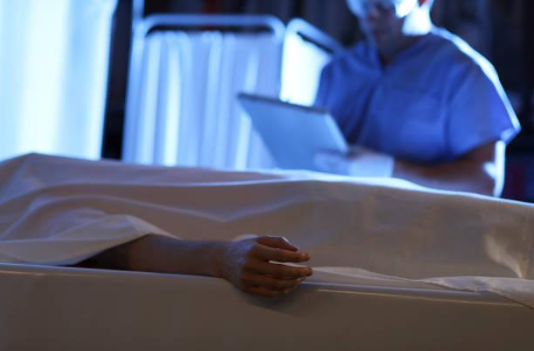 4. A College women’s track team was using Portland University’s track on the day Kate was murdered. Their coach was male. Investigators asked for DNA. He refused to provide a sample. They heard the coach regularly went to a bar in Portland, called, The Olive or Twist. They staked it out, hoping to take one of his drink glasses to test his DNA. However, he stopped going to the bar after Kate’s murder. He was not the killer.
4. A College women’s track team was using Portland University’s track on the day Kate was murdered. Their coach was male. Investigators asked for DNA. He refused to provide a sample. They heard the coach regularly went to a bar in Portland, called, The Olive or Twist. They staked it out, hoping to take one of his drink glasses to test his DNA. However, he stopped going to the bar after Kate’s murder. He was not the killer.
 5. A Holy Cross priest named David Adaikalam was living in the dorm when Kate died. Initially investigators were told David had already left the country at the time of the murder. However, they learned this wasn’t true. This led to allegations of a cover-up. After interviewing him, police announced David wasn’t a suspect.
5. A Holy Cross priest named David Adaikalam was living in the dorm when Kate died. Initially investigators were told David had already left the country at the time of the murder. However, they learned this wasn’t true. This led to allegations of a cover-up. After interviewing him, police announced David wasn’t a suspect. 
 Finally, a hit:
Finally, a hit:
Kate’s supervisor, as a dormitory residence assistant, held a poker game in a home across the street from Kate’s dormitory on the night of her murder. All of the players offered their DNA willingly.
It turns out the DNA belonged to Deniz Aydiner, age 35,-- one of the poker players. A search of his home discovered the items that had been stolen from Mehling dormitory two months prior to Kate’s murder. Aydiner was the one who had entered the dorm with a key and stolen items from rooms. This perhaps draws attention to the need for addressing nonviolent crimes, before they progress. The problem investigators now had was, Aydiner had returned to his homeland of Turkey. They hadn’t expected him to leave without his family. The investigators made a decision which would lead to harsh skepticism from the community and would be hurtful to Kate’s family. It would lead to the University of Portland being accused of protecting the Priest, when in truth the Priest had nothing to do with the murder. The investigators announced they were closing the investigation without resolution. What the public didn’t know was they were daring Turkish immigrant, Deniz Aydiner, to return to the U.S.
--Regarding the accusations leveled against the Priest: It’s interesting that accusers never seem to come back and apologize when they’re wrong. So instead, it’s only the accusation that remains in the public’s mind. I know people will say there have been cover-ups by the church in the past. My point is that every injustice should be addressed, not rationalized. Rationalizing injustice is what killers do. On January 16, 2004, Deniz Aydiner took the bait and returned to the U.S. He was arrested when he stepped on U.S. soil. Aydiner’s attorney argued that the DNA swab shouldn’t have been admissible, since the police officers never warned him that giving it could affect his immigration status. Aydiner’s DNA was linked to the 2001 sexual assault and killing of Catherine “Kate” Mary Helene Johnson. Aydiner claimed the Portland police violated an extradition treaty by using "trickery and deceit" to get him to return to Portland where he was charged in the death of a University of Portland student. I find it absurd that a man who raped and murdered a wonderful person, would be concerned his rights were violated because he was lied to.
On January 16, 2004, Deniz Aydiner took the bait and returned to the U.S. He was arrested when he stepped on U.S. soil. Aydiner’s attorney argued that the DNA swab shouldn’t have been admissible, since the police officers never warned him that giving it could affect his immigration status. Aydiner’s DNA was linked to the 2001 sexual assault and killing of Catherine “Kate” Mary Helene Johnson. Aydiner claimed the Portland police violated an extradition treaty by using "trickery and deceit" to get him to return to Portland where he was charged in the death of a University of Portland student. I find it absurd that a man who raped and murdered a wonderful person, would be concerned his rights were violated because he was lied to.
In February 2006, Deniz C. Aydiner, 35, a Turkish citizen, pled guilty and was sentenced to life in prison with the possibility of parole after 37 years. Kate’s family was glad to be spared a public trial. It was noted that if Aydiner is ever released he will be deported to Turkey. Aydiner would later appeal the ruling, but the appeal was rejected by the Oregon Court of Appeals.
It would ultimately be revealed that Deniz Aydiner had been verbally abusive to his wife in a bar when Kate was out on her 21st birthday. Kate seldom went out, but was encouraged by friends to go out for her 21st. Kate confronted Aydiner on his behavior. Deniz argued that the behavior was normal for Turkey. She pointed out that they were in Oregon. From that night forward Deniz planned his revenge. Deniz managed to secure a campus pass card from a friend who worked in campus security, entered the dorm that night, brutally assaulted her and murdered her. (Today they would know exactly whose security card was used. They didn’t have this technology at the University of Portland at the time.) Kate’s willingness to get involved makes me proud of her.
 We do this work for people like Kate. So, others don’t have to experience her fate. Kate Johnson was the best of us, and the kind of person we hope our children aspire to be.
We do this work for people like Kate. So, others don’t have to experience her fate. Kate Johnson was the best of us, and the kind of person we hope our children aspire to be.
 Holy Cross Father William Beauchamp, University of Portland president said, “Kate will always be remembered and honored on the Bluff for her selfless generosity. She embodied the best of the University of Portland, and we continue to celebrate her life through an annual award for the most outstanding student in volunteer services.” I am interested in thoughts people have to share about this case. Please feel free to share them.
Holy Cross Father William Beauchamp, University of Portland president said, “Kate will always be remembered and honored on the Bluff for her selfless generosity. She embodied the best of the University of Portland, and we continue to celebrate her life through an annual award for the most outstanding student in volunteer services.” I am interested in thoughts people have to share about this case. Please feel free to share them.
Thanks for listening,
Frank Events in the upcoming month:
Events in the upcoming month:
Saturday, July 20, 2024, Frank Weber will be selling his books at the Creators Market in Hastings for Rivertown Days. Frank will be set up outside of Quaint & Quirky Minnesota Gifts on 216 Second Street East in Hastings, Minnesota. The event last from 10:00 a.m. to 7:00 p.m.
Sunday, July 21 , 2024, Forensic Psychologist & True Crime Author, Frank F. Weber, will be at Alloy Brewing Company in Coon Rapids speaking from 2:00 to 3:00 p.m. Frank will demonstrate a live lie detector test (volunteer a friend). Enjoy a cold brew and ask forensic questions. Frank will be at Alloy from 1:00 p.m. to 4:00 answering questions on his work, signing and selling his books, and discussing the latest forensic tools. Alloy Brewing Company is located at: 2700 Coon Rapids Blvd NW, Coon Rapids, MN 55433.
Friday, July 26, 2024, Forensic Psychologist &True Crime Author, Frank Weber, will be at Rapids Brewing Company in Grand Rapids, Minnesota, from 4:30 to 8:30 p.m. He’ll speak from 6:00 to 7:00 p.m. about Forensic psychology and the writing of True Crime mysteries. Frank will demonstrate a live lie detector test (volunteer a friend). Enjoy a cold brew and ask forensic questions. Rapids Brewing Company is located at: 214 North Pokegama Avenue, Grand Rapids, Minnesota, 55744.
Sunday, July 28, 2024 from 9:00 to 3:00 p.m. Frank will be at Art in the Park in Detroit Lakes selling and signing all of his books including his newest, Scandal of Vandals. The event is sponsored by the Detroit Lakes Chamber of Commerce and is located at 1320 Lincoln Avenue, Detroit Lakes, Minnesota.
Saturday, August 3, 2024, Forensic Psychologist &True Crime Author, Frank Weber, will be at Wabasha Brewing in St.Paul, Minnesota, from 12:30 to 5:30 p.m. He’ll speak from 2:00 to 3:00 p.m. about Forensic psychology and the writing of True Crime mysteries. Enjoy a cold brew and ask forensic questions. Wabasha Brewing is located at: 429 Wabasha Street South, St Paul, Minnesota, 55107.
Monday, August 5, 2024, Beaver Island Brewing Company is hosting the St.Cloud opening of Scandal of Vandals from 4:30 to 8:30 p.m.. Frank will speak from 6:00 p.m. to 7:00 p,m. on his newest book, Scandal of Vandals. Frank will share some of the intriguing information he uncovered related to the case and give a live demonstration of a lie detector test (volunteer a friend). There is a scene at Beaver Island in the book. It’s a chance to experience the story, on location, while enjoying a cold beverage. The Beaver Island Brewing Company is located at 216 6th Avenue South, St. Cloud, Minnesota on Division.
Friday, August 9 , 2024, Forensic Psychologist & True Crime Author, Frank F. Weber, will be at Roundhouse Brewing Company in Nisswa speaking from 5:00 to 6:00 p.m. Frank will discuss some of the bizarre facts related to his newest true crime novel, Scandal of Vandals, Frank will demonstrate a live lie detector test (volunteer a friend). Enjoy a cold brew and ask forensic questions. Frank will be at Roundhouse Brewery from 4:00 p.m. to 8:00 p.m. answering questions on his work, signing and selling his books. Frank will be with the audience by the stage, selling books and enjoying the music after speaking. Roundhouse Brewing Company is located at 23836 Smiley Road, Nisswa, Minnesota, 56468.
Saturday, August 10, 2024 from 9:00 to 4:00 p.m. Frank will be at Art of the Lakes in Battle Lake selling and signing all of his books including his newest, Scandal of Vandals. The event is located at Railroad Park in Battle Lake, Minnesota.
Tuesday, August 13, 2024, Frank Weber will be speaking to the Words and Wine Book Club at Porky’s Bar in Hillman (not to be confused with Wine and Words in Brainerd) from 12:00 noon to 12:45 p.m. Frank will be discussing Black and Blue and will be addressing questions on forensics and all of his true crime mysteries. Brothers Porky’s Pine Bar and Grill is located at 36972 Minnesota Highway 27 #3, Hillman, Minnesota, 56338
suburb of Portland, Oregon) and grew up in Vancouver. She graduated at the top of her class at
Evergreen High School. Her first college choice was Pacific Lutheran University, but for
financial reasons transferred to the University of Portland, 17 miles from home. There, she was a
music education major, who student-taught in preparation for someday securing work as a high
school band teacher. Kate volunteered for Habitat for Humanity.
 Hillsboro suburb in Portland, Oregon. Kate Johnson wore comfortable clothes, drove a Honda, loved Mexican food and her black
Hillsboro suburb in Portland, Oregon. Kate Johnson wore comfortable clothes, drove a Honda, loved Mexican food and her blackLabrador, Moose. “Kate loved music and playing the clarinet.” Kim Vu told a reporter for the UP newspaper, The Beacon. “I would always hear her playing her music… Her room was always
filled with music. I knew she would be the perfect music teacher.”
 The University of Portland is ranked #2 out of 120 regional universities. Kate (Catherine Johnson) was described by university staff and students as a lovely, self-effacing young woman who epitomized the University's ideals of faith and service. She spent countless hours on volunteer activities, including working with low-income children, mentoring young girls and teaching music.
The University of Portland is ranked #2 out of 120 regional universities. Kate (Catherine Johnson) was described by university staff and students as a lovely, self-effacing young woman who epitomized the University's ideals of faith and service. She spent countless hours on volunteer activities, including working with low-income children, mentoring young girls and teaching music.On May 29, 2001 Kate Johnson was murdered in her dorm room. The rape was violent, and she had significant bruises on her breasts and body that occurred before she died. Kate’s mother, Edie Rollison, recounted in court she learned of her daughter's death watching the TV news. They reported a university homicide. Although they did not mention the victim's name, she had a sinking feeling right away. "I knew immediately it was Kate," she said, "and at that moment my life as I knew it came to an end.

The CSI team scoured the dorm room and found saliva from the killer on her pillowcase.

 Mehling Hall On April 30, 2002 (1 year later), the Williamette Weekly, a Portland newspaper published an article written by Nigel Jaquiss:
Mehling Hall On April 30, 2002 (1 year later), the Williamette Weekly, a Portland newspaper published an article written by Nigel Jaquiss:“Police and university officials have released few details, other than that Johnson died of ‘homicidal violence’ and that there was no sign of a break-in at Mehling Hall, the dorm where she lived…” “Two months before Johnson's murder, Mehling Hall was burglarized, according to police reports. Sometime between March 10 and March 20 (2001), during UP's (University of Portland) spring break, someone gained entry to three students' rooms, stealing items including jewelry, textbooks and clothing. The burglaries bore two significant parallels to Johnson's murder. The first is that, like the murder, they took place at a time when school was not in session, which suggests the perpetrator was familiar with UP's calendar. Second and more significantly, in both instances there was no sign of a break-in. In fact, the police reports about the March burglaries state, ‘No sign of forced entry. Its possible that burglarys [sic] were done by someone with a University Master key for Mehling Hall.’ When contacted by WW, Russell Johnson, Catherine's father, was stunned at the news that there had been a prior break-in at the dorm where his daughter was murdered. "I didn't get that information," he says. "[University of Portland] didn't tell me any of that." “John Rhodes, the Portland Police Bureau detective heading the investigation, concedes that there are currently no suspects in the case, nor has anyone come forward with significant clues. "It's a real whodunit," Rhodes says.”
The sad piece is the haunting that hangs on to a community after a violent crime. The University of Portland had received acknowledgements in the U.S. News & World Report for being an excellent academic school. However, for years since 2001 they were known for Kate Johnson’s unsolved murder.
Suspects identified and ruled out:
1. Kate had journaled about a foreign student she liked. He was out of the country at the time of Kate’s death
 2. Since Kate had been handcuffed, the security staff were DNA tested. No match.
2. Since Kate had been handcuffed, the security staff were DNA tested. No match.  3. The Medical Examiner on the scene was odd and made claims, “she was handcuffed” and “she was choked,” when it wasn’t obvious to others at the scene. The statements turned out to be true. The examiner returned to the scene after his forensic work was done and climbed up the drainpipe to Kate’s second floor room to prove the killer could have come up this way. Investigators thought he seemed to know too much, so they DNA tested him. He was no match.
3. The Medical Examiner on the scene was odd and made claims, “she was handcuffed” and “she was choked,” when it wasn’t obvious to others at the scene. The statements turned out to be true. The examiner returned to the scene after his forensic work was done and climbed up the drainpipe to Kate’s second floor room to prove the killer could have come up this way. Investigators thought he seemed to know too much, so they DNA tested him. He was no match. 4. A College women’s track team was using Portland University’s track on the day Kate was murdered. Their coach was male. Investigators asked for DNA. He refused to provide a sample. They heard the coach regularly went to a bar in Portland, called, The Olive or Twist. They staked it out, hoping to take one of his drink glasses to test his DNA. However, he stopped going to the bar after Kate’s murder. He was not the killer.
4. A College women’s track team was using Portland University’s track on the day Kate was murdered. Their coach was male. Investigators asked for DNA. He refused to provide a sample. They heard the coach regularly went to a bar in Portland, called, The Olive or Twist. They staked it out, hoping to take one of his drink glasses to test his DNA. However, he stopped going to the bar after Kate’s murder. He was not the killer.  5. A Holy Cross priest named David Adaikalam was living in the dorm when Kate died. Initially investigators were told David had already left the country at the time of the murder. However, they learned this wasn’t true. This led to allegations of a cover-up. After interviewing him, police announced David wasn’t a suspect.
5. A Holy Cross priest named David Adaikalam was living in the dorm when Kate died. Initially investigators were told David had already left the country at the time of the murder. However, they learned this wasn’t true. This led to allegations of a cover-up. After interviewing him, police announced David wasn’t a suspect. 
 Finally, a hit:
Finally, a hit:Kate’s supervisor, as a dormitory residence assistant, held a poker game in a home across the street from Kate’s dormitory on the night of her murder. All of the players offered their DNA willingly.
It turns out the DNA belonged to Deniz Aydiner, age 35,-- one of the poker players. A search of his home discovered the items that had been stolen from Mehling dormitory two months prior to Kate’s murder. Aydiner was the one who had entered the dorm with a key and stolen items from rooms. This perhaps draws attention to the need for addressing nonviolent crimes, before they progress. The problem investigators now had was, Aydiner had returned to his homeland of Turkey. They hadn’t expected him to leave without his family. The investigators made a decision which would lead to harsh skepticism from the community and would be hurtful to Kate’s family. It would lead to the University of Portland being accused of protecting the Priest, when in truth the Priest had nothing to do with the murder. The investigators announced they were closing the investigation without resolution. What the public didn’t know was they were daring Turkish immigrant, Deniz Aydiner, to return to the U.S.
--Regarding the accusations leveled against the Priest: It’s interesting that accusers never seem to come back and apologize when they’re wrong. So instead, it’s only the accusation that remains in the public’s mind. I know people will say there have been cover-ups by the church in the past. My point is that every injustice should be addressed, not rationalized. Rationalizing injustice is what killers do.
 On January 16, 2004, Deniz Aydiner took the bait and returned to the U.S. He was arrested when he stepped on U.S. soil. Aydiner’s attorney argued that the DNA swab shouldn’t have been admissible, since the police officers never warned him that giving it could affect his immigration status. Aydiner’s DNA was linked to the 2001 sexual assault and killing of Catherine “Kate” Mary Helene Johnson. Aydiner claimed the Portland police violated an extradition treaty by using "trickery and deceit" to get him to return to Portland where he was charged in the death of a University of Portland student. I find it absurd that a man who raped and murdered a wonderful person, would be concerned his rights were violated because he was lied to.
On January 16, 2004, Deniz Aydiner took the bait and returned to the U.S. He was arrested when he stepped on U.S. soil. Aydiner’s attorney argued that the DNA swab shouldn’t have been admissible, since the police officers never warned him that giving it could affect his immigration status. Aydiner’s DNA was linked to the 2001 sexual assault and killing of Catherine “Kate” Mary Helene Johnson. Aydiner claimed the Portland police violated an extradition treaty by using "trickery and deceit" to get him to return to Portland where he was charged in the death of a University of Portland student. I find it absurd that a man who raped and murdered a wonderful person, would be concerned his rights were violated because he was lied to. In February 2006, Deniz C. Aydiner, 35, a Turkish citizen, pled guilty and was sentenced to life in prison with the possibility of parole after 37 years. Kate’s family was glad to be spared a public trial. It was noted that if Aydiner is ever released he will be deported to Turkey. Aydiner would later appeal the ruling, but the appeal was rejected by the Oregon Court of Appeals.
It would ultimately be revealed that Deniz Aydiner had been verbally abusive to his wife in a bar when Kate was out on her 21st birthday. Kate seldom went out, but was encouraged by friends to go out for her 21st. Kate confronted Aydiner on his behavior. Deniz argued that the behavior was normal for Turkey. She pointed out that they were in Oregon. From that night forward Deniz planned his revenge. Deniz managed to secure a campus pass card from a friend who worked in campus security, entered the dorm that night, brutally assaulted her and murdered her. (Today they would know exactly whose security card was used. They didn’t have this technology at the University of Portland at the time.) Kate’s willingness to get involved makes me proud of her.
 We do this work for people like Kate. So, others don’t have to experience her fate. Kate Johnson was the best of us, and the kind of person we hope our children aspire to be.
We do this work for people like Kate. So, others don’t have to experience her fate. Kate Johnson was the best of us, and the kind of person we hope our children aspire to be. Holy Cross Father William Beauchamp, University of Portland president said, “Kate will always be remembered and honored on the Bluff for her selfless generosity. She embodied the best of the University of Portland, and we continue to celebrate her life through an annual award for the most outstanding student in volunteer services.” I am interested in thoughts people have to share about this case. Please feel free to share them.
Holy Cross Father William Beauchamp, University of Portland president said, “Kate will always be remembered and honored on the Bluff for her selfless generosity. She embodied the best of the University of Portland, and we continue to celebrate her life through an annual award for the most outstanding student in volunteer services.” I am interested in thoughts people have to share about this case. Please feel free to share them.Thanks for listening,
Frank
 Events in the upcoming month:
Events in the upcoming month:Saturday, July 20, 2024, Frank Weber will be selling his books at the Creators Market in Hastings for Rivertown Days. Frank will be set up outside of Quaint & Quirky Minnesota Gifts on 216 Second Street East in Hastings, Minnesota. The event last from 10:00 a.m. to 7:00 p.m.
Sunday, July 21 , 2024, Forensic Psychologist & True Crime Author, Frank F. Weber, will be at Alloy Brewing Company in Coon Rapids speaking from 2:00 to 3:00 p.m. Frank will demonstrate a live lie detector test (volunteer a friend). Enjoy a cold brew and ask forensic questions. Frank will be at Alloy from 1:00 p.m. to 4:00 answering questions on his work, signing and selling his books, and discussing the latest forensic tools. Alloy Brewing Company is located at: 2700 Coon Rapids Blvd NW, Coon Rapids, MN 55433.
Friday, July 26, 2024, Forensic Psychologist &True Crime Author, Frank Weber, will be at Rapids Brewing Company in Grand Rapids, Minnesota, from 4:30 to 8:30 p.m. He’ll speak from 6:00 to 7:00 p.m. about Forensic psychology and the writing of True Crime mysteries. Frank will demonstrate a live lie detector test (volunteer a friend). Enjoy a cold brew and ask forensic questions. Rapids Brewing Company is located at: 214 North Pokegama Avenue, Grand Rapids, Minnesota, 55744.
Sunday, July 28, 2024 from 9:00 to 3:00 p.m. Frank will be at Art in the Park in Detroit Lakes selling and signing all of his books including his newest, Scandal of Vandals. The event is sponsored by the Detroit Lakes Chamber of Commerce and is located at 1320 Lincoln Avenue, Detroit Lakes, Minnesota.
Saturday, August 3, 2024, Forensic Psychologist &True Crime Author, Frank Weber, will be at Wabasha Brewing in St.Paul, Minnesota, from 12:30 to 5:30 p.m. He’ll speak from 2:00 to 3:00 p.m. about Forensic psychology and the writing of True Crime mysteries. Enjoy a cold brew and ask forensic questions. Wabasha Brewing is located at: 429 Wabasha Street South, St Paul, Minnesota, 55107.
Monday, August 5, 2024, Beaver Island Brewing Company is hosting the St.Cloud opening of Scandal of Vandals from 4:30 to 8:30 p.m.. Frank will speak from 6:00 p.m. to 7:00 p,m. on his newest book, Scandal of Vandals. Frank will share some of the intriguing information he uncovered related to the case and give a live demonstration of a lie detector test (volunteer a friend). There is a scene at Beaver Island in the book. It’s a chance to experience the story, on location, while enjoying a cold beverage. The Beaver Island Brewing Company is located at 216 6th Avenue South, St. Cloud, Minnesota on Division.
Friday, August 9 , 2024, Forensic Psychologist & True Crime Author, Frank F. Weber, will be at Roundhouse Brewing Company in Nisswa speaking from 5:00 to 6:00 p.m. Frank will discuss some of the bizarre facts related to his newest true crime novel, Scandal of Vandals, Frank will demonstrate a live lie detector test (volunteer a friend). Enjoy a cold brew and ask forensic questions. Frank will be at Roundhouse Brewery from 4:00 p.m. to 8:00 p.m. answering questions on his work, signing and selling his books. Frank will be with the audience by the stage, selling books and enjoying the music after speaking. Roundhouse Brewing Company is located at 23836 Smiley Road, Nisswa, Minnesota, 56468.
Saturday, August 10, 2024 from 9:00 to 4:00 p.m. Frank will be at Art of the Lakes in Battle Lake selling and signing all of his books including his newest, Scandal of Vandals. The event is located at Railroad Park in Battle Lake, Minnesota.
Tuesday, August 13, 2024, Frank Weber will be speaking to the Words and Wine Book Club at Porky’s Bar in Hillman (not to be confused with Wine and Words in Brainerd) from 12:00 noon to 12:45 p.m. Frank will be discussing Black and Blue and will be addressing questions on forensics and all of his true crime mysteries. Brothers Porky’s Pine Bar and Grill is located at 36972 Minnesota Highway 27 #3, Hillman, Minnesota, 56338
Published on July 19, 2024 11:57
July 10, 2024
Paso Robles, Carmel and Monterey Bay
Austin Hope Family Wines gave Brenda and I a wonderful tour of their winery. A personal host, sat with the two of us, and we must have tasted ten different wines, side by side. We had sought out this winery as we are fans of the Austin Hope cabernet and Liberty School cab, both made by the Hope family. We have such a fondness for their product you will see the Austin Hope Paso Robles cabernet on the cover of my next book, The Sun. (Pictures of Austin Hope winery and tasting room are included below) 





 If you're looking for great wine, I'd highly recommend visiting Austin Hope Family Winery.
If you're looking for great wine, I'd highly recommend visiting Austin Hope Family Winery. 
 If you are interested in a winery with beautiful facilities, visit Robert Hall Winery. Robert Hall was a Minnesota native and Navy veteran whose company contracted to sheetrock the Mall of America. Robert and Margaret Hall moved to Paso Robles in 1994 and built an amazing winery. When Brenda and our daughter, visited the winery 10 years ago, Robert Hall Winery hosted exclusive food and wine events. The company was since bought by a corporation and is currently more profit oriented.
If you are interested in a winery with beautiful facilities, visit Robert Hall Winery. Robert Hall was a Minnesota native and Navy veteran whose company contracted to sheetrock the Mall of America. Robert and Margaret Hall moved to Paso Robles in 1994 and built an amazing winery. When Brenda and our daughter, visited the winery 10 years ago, Robert Hall Winery hosted exclusive food and wine events. The company was since bought by a corporation and is currently more profit oriented. 



 I am no wine connoisseur. My wife has a far better palate than I. After a couple tastes, I asked if I could have a beer and was offered this very creative can. There is no writing on the front of the can, and it’s brewed by There Does Not Exist Brewery. It is a Helles lager that is quite good.
I am no wine connoisseur. My wife has a far better palate than I. After a couple tastes, I asked if I could have a beer and was offered this very creative can. There is no writing on the front of the can, and it’s brewed by There Does Not Exist Brewery. It is a Helles lager that is quite good.
If it seems that I do a lot of alcohol research, read my books. I research everything and I like to know how things are made. On vacation I’ve toured ice cream companies, spice companies, ranches and a variety of places that traditionally don’t offer tours. It’s amazing what you can see, if you simply ask. By the way, Paso Robles is also known as a great environment for growing raspberries, and we ate the best raspberries I’ve ever tasted.
While we were in Paso Robles we had to visit Firestone Walker, which brews one of my favorite lagers, 805. Brenda and I received a personal tour through the entire brewery. The Firestone family went from tires, to wines, to a son, Adam Firestone, who started a brewery with his sister’s husband David Walker. Adam’s father owned a winery and sold Adam a vineyard in Los Olivos, California, in 1996, to start his trade. I was a fan of Firestone Walker before I visited Paso Robles and a bigger fan after. It is the third largest taproom in the U.S. behind Stone and Sierra Nevada. Brenda and visited Sierra Nevada’s huge brewery in North Carolina a couple years ago. Firestone Walker is solar powered. The mash is given to the local university’s agricultural program to feed its animals. People who work there, are proud of what they do.





 One of the brewers pulled a couple bottles right off the line, after they were capped at 39 degrees and handed them to us. Former Minnesota native, Matt Brynuldson, Firestone Walker’s master brewer, has been selected the global master brewer, 4 times.
One of the brewers pulled a couple bottles right off the line, after they were capped at 39 degrees and handed them to us. Former Minnesota native, Matt Brynuldson, Firestone Walker’s master brewer, has been selected the global master brewer, 4 times.  Matt created both 805 Lager and their award winning Pivo Pils.
Matt created both 805 Lager and their award winning Pivo Pils.  After I time in Paso Robles it was off to Carmel and Monterey Bay.
After I time in Paso Robles it was off to Carmel and Monterey Bay.


 View from our hotel
View from our hotel 


 I love walking along the ocean. There are few things in life that bring me greater peace.
I love walking along the ocean. There are few things in life that bring me greater peace.  I can’t say it better than the pics show. It was fun. If you would have told Brenda and I, that we’d be celebrating our anniversary walking along the ocean in 40 years, we wouldn’t have been surprised. Some things end up being exactly what you hope—maybe even a little better.
I can’t say it better than the pics show. It was fun. If you would have told Brenda and I, that we’d be celebrating our anniversary walking along the ocean in 40 years, we wouldn’t have been surprised. Some things end up being exactly what you hope—maybe even a little better.











 Happiness is continuing to desire what you already have. ( St. Augustine)
Happiness is continuing to desire what you already have. ( St. Augustine)
Thanks for listening,
Frank
 “This is story about a little wave, bobbing along in the ocean, having a grand old time. He’s enjoying the wind and the fresh air — until he notices the other waves in front of him, crashing against the shore.”
“This is story about a little wave, bobbing along in the ocean, having a grand old time. He’s enjoying the wind and the fresh air — until he notices the other waves in front of him, crashing against the shore.”
“‘My God, this is terrible,’ the wave says ‘Look what’s going to happen to me!’”
“Then along comes another wave. It sees the first wave, looking grim, and it says to him, ‘Why do you look so sad?’ “
“The first wave says, ‘You don’t understand! We’re all going to crash! All of us waves are going to be nothing! Isn’t it terrible?’ “
“The second wave says, ‘No, you don’t understand. You’re not a wave, you’re part of the ocean.’”
“Part of the ocean,” he says. “Part of the ocean.”
— Tuesdays with Morrie, page 179 written by Mitch Albom






 If you're looking for great wine, I'd highly recommend visiting Austin Hope Family Winery.
If you're looking for great wine, I'd highly recommend visiting Austin Hope Family Winery. 
 If you are interested in a winery with beautiful facilities, visit Robert Hall Winery. Robert Hall was a Minnesota native and Navy veteran whose company contracted to sheetrock the Mall of America. Robert and Margaret Hall moved to Paso Robles in 1994 and built an amazing winery. When Brenda and our daughter, visited the winery 10 years ago, Robert Hall Winery hosted exclusive food and wine events. The company was since bought by a corporation and is currently more profit oriented.
If you are interested in a winery with beautiful facilities, visit Robert Hall Winery. Robert Hall was a Minnesota native and Navy veteran whose company contracted to sheetrock the Mall of America. Robert and Margaret Hall moved to Paso Robles in 1994 and built an amazing winery. When Brenda and our daughter, visited the winery 10 years ago, Robert Hall Winery hosted exclusive food and wine events. The company was since bought by a corporation and is currently more profit oriented. 



 I am no wine connoisseur. My wife has a far better palate than I. After a couple tastes, I asked if I could have a beer and was offered this very creative can. There is no writing on the front of the can, and it’s brewed by There Does Not Exist Brewery. It is a Helles lager that is quite good.
I am no wine connoisseur. My wife has a far better palate than I. After a couple tastes, I asked if I could have a beer and was offered this very creative can. There is no writing on the front of the can, and it’s brewed by There Does Not Exist Brewery. It is a Helles lager that is quite good.If it seems that I do a lot of alcohol research, read my books. I research everything and I like to know how things are made. On vacation I’ve toured ice cream companies, spice companies, ranches and a variety of places that traditionally don’t offer tours. It’s amazing what you can see, if you simply ask. By the way, Paso Robles is also known as a great environment for growing raspberries, and we ate the best raspberries I’ve ever tasted.
While we were in Paso Robles we had to visit Firestone Walker, which brews one of my favorite lagers, 805. Brenda and I received a personal tour through the entire brewery. The Firestone family went from tires, to wines, to a son, Adam Firestone, who started a brewery with his sister’s husband David Walker. Adam’s father owned a winery and sold Adam a vineyard in Los Olivos, California, in 1996, to start his trade. I was a fan of Firestone Walker before I visited Paso Robles and a bigger fan after. It is the third largest taproom in the U.S. behind Stone and Sierra Nevada. Brenda and visited Sierra Nevada’s huge brewery in North Carolina a couple years ago. Firestone Walker is solar powered. The mash is given to the local university’s agricultural program to feed its animals. People who work there, are proud of what they do.





 One of the brewers pulled a couple bottles right off the line, after they were capped at 39 degrees and handed them to us. Former Minnesota native, Matt Brynuldson, Firestone Walker’s master brewer, has been selected the global master brewer, 4 times.
One of the brewers pulled a couple bottles right off the line, after they were capped at 39 degrees and handed them to us. Former Minnesota native, Matt Brynuldson, Firestone Walker’s master brewer, has been selected the global master brewer, 4 times.  Matt created both 805 Lager and their award winning Pivo Pils.
Matt created both 805 Lager and their award winning Pivo Pils.  After I time in Paso Robles it was off to Carmel and Monterey Bay.
After I time in Paso Robles it was off to Carmel and Monterey Bay.

 View from our hotel
View from our hotel 


 I love walking along the ocean. There are few things in life that bring me greater peace.
I love walking along the ocean. There are few things in life that bring me greater peace.  I can’t say it better than the pics show. It was fun. If you would have told Brenda and I, that we’d be celebrating our anniversary walking along the ocean in 40 years, we wouldn’t have been surprised. Some things end up being exactly what you hope—maybe even a little better.
I can’t say it better than the pics show. It was fun. If you would have told Brenda and I, that we’d be celebrating our anniversary walking along the ocean in 40 years, we wouldn’t have been surprised. Some things end up being exactly what you hope—maybe even a little better. 










 Happiness is continuing to desire what you already have. ( St. Augustine)
Happiness is continuing to desire what you already have. ( St. Augustine)Thanks for listening,
Frank
 “This is story about a little wave, bobbing along in the ocean, having a grand old time. He’s enjoying the wind and the fresh air — until he notices the other waves in front of him, crashing against the shore.”
“This is story about a little wave, bobbing along in the ocean, having a grand old time. He’s enjoying the wind and the fresh air — until he notices the other waves in front of him, crashing against the shore.”“‘My God, this is terrible,’ the wave says ‘Look what’s going to happen to me!’”
“Then along comes another wave. It sees the first wave, looking grim, and it says to him, ‘Why do you look so sad?’ “
“The first wave says, ‘You don’t understand! We’re all going to crash! All of us waves are going to be nothing! Isn’t it terrible?’ “
“The second wave says, ‘No, you don’t understand. You’re not a wave, you’re part of the ocean.’”
“Part of the ocean,” he says. “Part of the ocean.”
— Tuesdays with Morrie, page 179 written by Mitch Albom
Published on July 10, 2024 09:36
June 10, 2024
The Reality of Only Fans
 When you Google “What is OnlyFans?” this is the first answer that comes up:
When you Google “What is OnlyFans?” this is the first answer that comes up:OnlyFans is a subscription-focused online platform with messaging features. Creators can post content behind a paywall, and users pay to access it. The platform has become popular among adult-content creators, with some making millions of dollars.
If you search OnlyFans on Wikipedia, this is how it begins:
OnlyFans is an internet content subscription service based in London, United Kingdom. The service is used primarily by sex workers who produce pornography…
 OnlyFans is an online platform and app created in 2016. With it, people can pay for content (photos, videos and live streams) via a monthly membership. I will share information from Victoria Sinis, a former recruiter of girls and women for OnlyFans. I will use the terms “girls and women” because that is the reality of the site. Users and people who post are supposed to be 18 years of age, however all you need to do is show a form of ID, which historically was not double checked. It has become predominantly a porn site.
OnlyFans is an online platform and app created in 2016. With it, people can pay for content (photos, videos and live streams) via a monthly membership. I will share information from Victoria Sinis, a former recruiter of girls and women for OnlyFans. I will use the terms “girls and women” because that is the reality of the site. Users and people who post are supposed to be 18 years of age, however all you need to do is show a form of ID, which historically was not double checked. It has become predominantly a porn site.  Leonid Radvinsky, the 41-year-old Ukrainian American financed OnlyFans. He bragged of personally making $1.3 million a day on each of the 260 days he worked in 2022 off of the sex workers on the OnlyFans site. He hired Tim Stokely to run the site.
Leonid Radvinsky, the 41-year-old Ukrainian American financed OnlyFans. He bragged of personally making $1.3 million a day on each of the 260 days he worked in 2022 off of the sex workers on the OnlyFans site. He hired Tim Stokely to run the site. Tim Stokely ran the softcore pornography website GlamGirls before founding Customs4U, a website where customers could request custom videos from sex workers. In November 2016, he founded OnlyFans as a platform for performers to monetise their content and interactions directly. As a result of the financial profit her received from the sex workers on OnlyFans, Tim is now worth $120 million. In December 2021, Tim Stokely announced that he would be stepping down and that business woman, Amrapali Gan would be taking over as CEO.
 Amrapali Gan stepped down as CEO of OnlyFans after 18 months. She still runs OnlyFans out of India, but lives in California. She is now worth $15 million.
Amrapali Gan stepped down as CEO of OnlyFans after 18 months. She still runs OnlyFans out of India, but lives in California. She is now worth $15 million.

Keily Blair was appointed CEO in July 2023.
It is difficult to ascertain Keily Blair’s net worth today, as she does a better job hiding assets than her predecessors. It is accepted that she is now work “hundreds of millions.” There are famous people who have been paid to “legitimize” the site. For example: In May 2022, former Baywatch star, Carmen Electra joined the site, debuting her account with photos from her 50th birthday. To give you an idea of how financially lucrative this porn site is, there are 170 million users and an estimated 500,000 joining daily. OnlyFans takes 20% of the revenue. The annual profits for OnlyFans exceeds $500 million annually.
 Since joining OnlyFans, Carmen Electra has changed her name to back to her birth name Tara Leigh Patrick
Since joining OnlyFans, Carmen Electra has changed her name to back to her birth name Tara Leigh PatrickFormer OnlyFans recruiter, Victoria Sinis, shared on in an interview on the Fight the New Drug site that she was beginning to question her work when she heard a speaker at church talk specifically about the platform. All of the rationalizations she used were confronted. OnlyFans is sold as a chance for upcoming stars to “expose” themselves. It a very literal sense it’s true. 98% of the material on OnlyFans is pornography. Victoria now tells people if you’re on OnlyFans you’re a sex worker. They recruit “pretty” girls and women and tell them you can make a lot of money.
The number of people who make a million dollars is .01%. (This means the odds are .0001 in 100) There are 2.1 million people generating money for OnlyFans. They are instructed to post at least 3 times a day and are advised on how to speak to people. The average person earning $148 a month.
Victoria was told, “This is a woman run company.”
Consider this: “Do you honestly think there aren’t women who’d destroy other women for millions of dollars?”
Victoria shared how the women say OnlyFans treat us so nicely. She now says, “It’s called grooming.” Of course, OnlyFans treats you kindly. You are their product. You do all the work. You sell yourself and they collect rent.
 On OnlyFans the clients communicate with directly with the person posing for videos and pictures, to make it more personal. Victoria was instructed to tell women, “You only do what you’re comfortable doing,” but it’s not true. People pay for your site, and if you don’t do what a fan asks, they berate you and have the potential to ruin your business. Because people are paying, they feel entitled to make demands of you.
On OnlyFans the clients communicate with directly with the person posing for videos and pictures, to make it more personal. Victoria was instructed to tell women, “You only do what you’re comfortable doing,” but it’s not true. People pay for your site, and if you don’t do what a fan asks, they berate you and have the potential to ruin your business. Because people are paying, they feel entitled to make demands of you. It has created the Findom phenomena. A “Findom” is someone who is financially dominated. Typically, it’s a male who reports feeling powerless to the charms of the woman and spends large amounts of money on her. Handing over a huge amount of money. It includes:
Taking the model for shopping and covering their bills.
Sending gift cards to allure models.
Buying gifts for the model.
Allowing the model to make financial decisions.
 But here’s the catch: Findom, guys don’t hand over money for nothing in return. They typically expect a specific sexual experience in return for the money they hand over and they expect you to commit your time to them. Findoms often wait until the woman becomes financially dependent on the income, and then the power dynamic reverses.
But here’s the catch: Findom, guys don’t hand over money for nothing in return. They typically expect a specific sexual experience in return for the money they hand over and they expect you to commit your time to them. Findoms often wait until the woman becomes financially dependent on the income, and then the power dynamic reverses.  Ultimately, the woman--selling her time, finds it difficult to deny requests. They eventually cross their own moral beliefs. There ultimately is no online protection for the material being released. Pictures, videos and conversations have been sent to family members and former partners.
Ultimately, the woman--selling her time, finds it difficult to deny requests. They eventually cross their own moral beliefs. There ultimately is no online protection for the material being released. Pictures, videos and conversations have been sent to family members and former partners. Victoria said she finally realized she was “pimping.” She was coercing girls into sex work. Further, since she has left the company, she talks about accepting the realization that pornography contributes to rape. People become products, and when you think of people as products it’s easier to be violent toward them.
Interesting statistics:
87% of clients are male.
89% of the clients are married (How about working on your relationships instead?)
 59% are heterosexual
59% are heterosexual There is an incredible sadness of the dynamic on OnlyFans. We all need to discover our motivation for doing things. On OnlyFans the motivation for women is attention. For the men, it’s a fake love relationship. Victoria Sennis shared that for people like her (who worked in the business office), it was validation of being a successful businessperson. She came to realize it wasn’t worth the cost. She further stated for women, “Once you’re indoctrinated into that ecosystem (sex trafficking) it’s hard to get out.” People keep telling you there’s lots of money just ahead. Her advice is “No phones in the bedroom.”
How about caring and listening to others based on who they are, rather than what you can get them to do? Part of being a moral person is drawing lines on our own behavior. Just because you can get people to do things, doesn’t mean you should.
 No matter what people say, exposing yourself to customers is not normal, and that’s good. Only 4% of U.S. adults express any interest in being an OnlyFans content creator.
No matter what people say, exposing yourself to customers is not normal, and that’s good. Only 4% of U.S. adults express any interest in being an OnlyFans content creator.
Thanks for listening,
Frank

Published on June 10, 2024 10:38
April 23, 2024
Mindhunter Blog
Mindhunter, John Douglas, profiled Karla Brown’s murder to resolution.
 Karla Brown was born in Lima, Ohio. Her family initially lived in a trailer home. Karla and her two older sisters were great students and skilled cheerleaders. After high school, Karla and her fiancé, Mark Fair, bought a small one-story house. They would live there for less than 2 days. Karla was described attractive and petite at 4’11” and not more than 100 pounds.
Karla Brown was born in Lima, Ohio. Her family initially lived in a trailer home. Karla and her two older sisters were great students and skilled cheerleaders. After high school, Karla and her fiancé, Mark Fair, bought a small one-story house. They would live there for less than 2 days. Karla was described attractive and petite at 4’11” and not more than 100 pounds.
On June 21, 1978, at about 5:45 p.m. the police department of Wood River (Madison County, Illinois) received a call to come to 979 Acton concerning the death of Karla Brown. Mark Fair and his friend Thomas Feigenbaum returned to the home, Mark and Karla had moved into only the day before. Mark cried and held Karla’s body. He found Karla naked from the waist down in the laundry room in the basement. Karla’s head had been immersed in water in a large metal lard can. The container had been used to store winter clothes. Her hands were tied behind her back with a white extension cord from which the ends had been cut. Her stiffened body was bent over the barrel at the waist. Nude below the waist, she was wearing a heavy sweater that was buttoned. (Karla wouldn’t have put on this sweater. She only wore the sweater for social occasions in cold weather.) Two men's socks, tied together, were tied tightly around her neck. She had a large cut on her forehead, a cut on her nose, and a gash on her chin. It was clear Karla had fought the killer intensely. The couch in the basement was blood soaked, and blood was splattered on the basement floor. The killer had poured a large amount of water on the couch and scene. The entrance at the rear of the house lead directly to the basement.
Karla’s head had been immersed in water in a large metal lard can. The container had been used to store winter clothes. Her hands were tied behind her back with a white extension cord from which the ends had been cut. Her stiffened body was bent over the barrel at the waist. Nude below the waist, she was wearing a heavy sweater that was buttoned. (Karla wouldn’t have put on this sweater. She only wore the sweater for social occasions in cold weather.) Two men's socks, tied together, were tied tightly around her neck. She had a large cut on her forehead, a cut on her nose, and a gash on her chin. It was clear Karla had fought the killer intensely. The couch in the basement was blood soaked, and blood was splattered on the basement floor. The killer had poured a large amount of water on the couch and scene. The entrance at the rear of the house lead directly to the basement.
The police secured the crime scene. All of the State's witnesses at the scene testified that, with the exception of Mark Fair and Thomas Feigenbaum, only medical and law-enforcement personnel were at the scene. (This becomes significant as this foils the killer’s appeal.)
All of the fingerprints at the scene belonged to Karla, with the exception of one. That fingerprint was not matched. (The defense would argue that if the person convicted had committed the crime his fingerprints should have been at the scene. The reality is that 73% of the time there are no useable prints, beyond the victim’s, at a crime scene.) After 4 years the case went cold. Investigators turned to the FBI, and they had the opportunity to work with profiling legend, John Douglas. Douglas served as a sniper in the FBI, and later became a hostage negotiator. He transferred to the FBI's Behavioral Science Unit (BSU) in 1977 where he taught hostage negotiation and applied criminal psychology at the Academy in Quantico, Virginia to new FBI special agents, field agents, and police officers from all over the United States. John Douglas created the FBI's Criminal Profiling Program, now called the Behavioral Analysis Unit (BAU), and was later promoted to unit chief of the Investigative Support Unit, a division of the FBI's National Center for the Analysis of Violent Crime (NCAVC). The Netflix show Mindhunter is about John Douglas.
After 4 years the case went cold. Investigators turned to the FBI, and they had the opportunity to work with profiling legend, John Douglas. Douglas served as a sniper in the FBI, and later became a hostage negotiator. He transferred to the FBI's Behavioral Science Unit (BSU) in 1977 where he taught hostage negotiation and applied criminal psychology at the Academy in Quantico, Virginia to new FBI special agents, field agents, and police officers from all over the United States. John Douglas created the FBI's Criminal Profiling Program, now called the Behavioral Analysis Unit (BAU), and was later promoted to unit chief of the Investigative Support Unit, a division of the FBI's National Center for the Analysis of Violent Crime (NCAVC). The Netflix show Mindhunter is about John Douglas.
After reviewing the crime and the evidence John Douglas gave the following profile:
The Killer was:
In his 20’s to 30’s
Likely already interviewed by the police.
Someone who may have passed a polygraph.
A sloppy dresser
Someone who lived in the neighborhood.
Someone who would drive a red Volkswagen.
~~~~~~~All were ultimately correct! John Scroggins, who knew both Karla Brown and John Prante, testified that on the afternoon before the murder, he and Prante had been at a neighbor’s home, at which time Scroggins introduced Karla to Prante. John Prante afterward, on that same day, expressed his sexual interest in Karla.
John Scroggins, who knew both Karla Brown and John Prante, testified that on the afternoon before the murder, he and Prante had been at a neighbor’s home, at which time Scroggins introduced Karla to Prante. John Prante afterward, on that same day, expressed his sexual interest in Karla.
At 9:00 a.m. Karla had called Helen Fair, her fiancé’s mother. Helen returned her call between 10:00 and 11:00 a.m. The conversation was interrupted by Karla saying, "Helen, someone is at the door, and I'll call you back." When Helen did not hear from the Karla, she tried to call her between 12:00 and 12:30 p.m., but there was no answer.
It is significant to note that John Prante wasn’t the initial prime suspect, so the case was not investigated from the perspective that he was guilty.
In the summer of 1980 Alva Busch, a crime-scene technician with the Department of Law Enforcement, was investigating the case and felt that two new techniques, unavailable at the time of the murder, might aid the investigation: green laser, used with respect to fingerprints; and image enhancement, which was being used to identify instruments that had made wounds and to identify bite marks. In mid-August of 1980 police sent Dr. Homer Campbell of the University of New Mexico all of the photographs they had of the crime scene. Dr. Campbell indicated that the marks, on Karla’s right collarbone, were bite marks. Prior to this time no one had recognized the injury as bite marks. Green forensic light system On June 2, 1982, following exhumation of the body, Dr. Mary Case performed an autopsy. She found that the jawbone had been broken in two places by a single blow and that the skull had been injured by three blows of significant force with a blunt instrument. Dr. Case was of the opinion that the cause of death was drowning because of the presence of foam around the nose, indicating that the victim had had respiratory movements under the water. The witness was of the further opinion that the victim had been sexually assaulted. She testified that bite marks in the area of the right collarbone had been inflicted at about the time of death when the other injuries were inflicted and not, for example, two days earlier or even one hour earlier, because microscopic slides of that tissue showed fresh hemorrhage in the subcutaneous tissue with no inflammation.
Green forensic light system On June 2, 1982, following exhumation of the body, Dr. Mary Case performed an autopsy. She found that the jawbone had been broken in two places by a single blow and that the skull had been injured by three blows of significant force with a blunt instrument. Dr. Case was of the opinion that the cause of death was drowning because of the presence of foam around the nose, indicating that the victim had had respiratory movements under the water. The witness was of the further opinion that the victim had been sexually assaulted. She testified that bite marks in the area of the right collarbone had been inflicted at about the time of death when the other injuries were inflicted and not, for example, two days earlier or even one hour earlier, because microscopic slides of that tissue showed fresh hemorrhage in the subcutaneous tissue with no inflammation.
(Here is where the case gets tricky. Bite mark evidence is not conclusive. It’s not like DNA. The investigative show on this case suggests that matching Prante’s teeth to the bitemark solved the case. That’s not true as the jury wasn’t certain about the validity of bite mark comparison. But it is true that the bitemark may have helped solved the case in another manner. You’ll read about it in the next paragraph.)
Vickie and Mark White testified that 3 days after the murder they had been visiting with John Prante and he began talking about Karla Brown’s murder. Prante told them Karla was found in a curled-up position with teeth marks on her shoulder. Prante told them she had been drowned in her basement.
(This is evidence that had not been released. Keep in mind, it wasn’t until three years after the murder, that medical examiners realized they were teeth marks. Prante would later appeal his convictions arguing bitemarks are difficult to match. The appellate judge ruled it wasn’t the bitemark match that got him convicted. He would later argue that he had seen the victim over a police officer’s shoulders at the scene. But they already had witnesses testifying it was only Karla’s fiancé and his friend at the scene.)
Spencer Bond testified that on the Friday after the murder John Prante told him "the girl was in a curled position stuck in a pail of water down in the basement." Prante had said that "she had teeth marks on her shoulder where she had been bitten on her left shoulder," gesturing as he made the statement. Prante also told him the victim had been tied up. (Once again, these details had not been made public.) Prante said that on the day of the killing he was at the house next door to Karl and was getting drunk and high. Susan Lutz had dated John Prante after the murder. Susan stated that Prance once “whispered in my ear that he had killed a woman." Expressing disbelief at first, she asked him, "Did you really kill somebody?" to which he responded, "I can't really talk about it because I'll lose my freedom." Asked why he had killed the woman, Prante answered that he was "mad." Susan said that "there was a couple times he bit me on the neck, and it made me mad." Prante had bitten her on her left shoulder, similar to his murder victim.
Susan Lutz had dated John Prante after the murder. Susan stated that Prance once “whispered in my ear that he had killed a woman." Expressing disbelief at first, she asked him, "Did you really kill somebody?" to which he responded, "I can't really talk about it because I'll lose my freedom." Asked why he had killed the woman, Prante answered that he was "mad." Susan said that "there was a couple times he bit me on the neck, and it made me mad." Prante had bitten her on her left shoulder, similar to his murder victim.
Ada Pollard testified that on June 21, 1978, John Prante came over seeking tranquilizers. Prante said a girl had been killed, and she asked him how he knew, he said, “got a glimpse of the girl by looking over the policeman's shoulder at the crime scene. The body was found curled up on the floor with its hands tied behind its back." Prante revealed "that he had been over at Paul's — Paul Main's house most of the day smoking— smoking pot and drinking beer." Further, Prante had previously commented that he wanted to be sexual with the victim. (It had been clarified that John Prante wasn’t at the scene after the police arrived.) Following a three-week jury trial in July of 1983, John Prante, was found guilty of the murder of Karla Brown and sentenced to the Department of Corrections for a term of 75 years. There was no useable DNA evidence collected, as DNA wouldn’t be used in a criminal case in the United States until 1986
Following a three-week jury trial in July of 1983, John Prante, was found guilty of the murder of Karla Brown and sentenced to the Department of Corrections for a term of 75 years. There was no useable DNA evidence collected, as DNA wouldn’t be used in a criminal case in the United States until 1986  John Prante appealed his conviction based on the bite-mark evidence used against him, but the appeal was denied. His attorney’s criticism of the bite-mark evidence was not enough to warrant a successive appeal because there was other evidence that pointed to Prante. (For example, Prante’s telling others about the facts of the case before it was public information.) Jurors paid little attention to the bite-mark evidence even though, at the time, the evidence attracted national attention.
John Prante appealed his conviction based on the bite-mark evidence used against him, but the appeal was denied. His attorney’s criticism of the bite-mark evidence was not enough to warrant a successive appeal because there was other evidence that pointed to Prante. (For example, Prante’s telling others about the facts of the case before it was public information.) Jurors paid little attention to the bite-mark evidence even though, at the time, the evidence attracted national attention.
At the time of John Prante’s sentence, the Truth-in-Sentencing law was not in effect, so Prante was allowed a day off his sentence for every “good” day he served. Prante served 36 years in prison. He was released in December of 2019.
On January 24, 2022, John Prante was arrested for Driving While Intoxicated. Investigative shows pursued John Douglas for his forensic interview tapes. (You can see the recorder on the table here in this Mindhunter episode.) But John Douglas didn’t record his interviews as he felt offenders wouldn’t be honest if he did. He further pointed out the importance of evidence, stating, “I don’t believe in self-reporting. These guys, they’ll lie to you. They lie to me. They won’t lie to you if they realize that you have studied their crime inside and out, and you’re not being antagonistic. You’re not shocked or offended.”
Investigative shows pursued John Douglas for his forensic interview tapes. (You can see the recorder on the table here in this Mindhunter episode.) But John Douglas didn’t record his interviews as he felt offenders wouldn’t be honest if he did. He further pointed out the importance of evidence, stating, “I don’t believe in self-reporting. These guys, they’ll lie to you. They lie to me. They won’t lie to you if they realize that you have studied their crime inside and out, and you’re not being antagonistic. You’re not shocked or offended.”
Thanks for listening,
Frank
 Saturday, April 27, 2024, Forensic Psychologist, Frank F. Weber, will be at Jack Pine Brewery, speaking from 5:00 to 6:00 p.m. on the writing of true crime, and forensic work, The Haunted House of Hillman {H2 OH} is a true story that involved teens daring each other to return to the rural home of an unsolved crime. Frank will share the amazing stories of victim survival that led to the resolution of this true crime thriller. Frank will demonstrate a lie detector test (volunteer a friend). You will also get some information on his next release (in June), Scandal of Vandals. Frank will be at Jack Pine from 3:00 to 8:00 p.m. signing and selling his books and answering questions on the latest forensic tools. Jack Pine Brewery is located at: 15593 Edgewood Drive North, Baxter, Minnesota, 56425.
Saturday, April 27, 2024, Forensic Psychologist, Frank F. Weber, will be at Jack Pine Brewery, speaking from 5:00 to 6:00 p.m. on the writing of true crime, and forensic work, The Haunted House of Hillman {H2 OH} is a true story that involved teens daring each other to return to the rural home of an unsolved crime. Frank will share the amazing stories of victim survival that led to the resolution of this true crime thriller. Frank will demonstrate a lie detector test (volunteer a friend). You will also get some information on his next release (in June), Scandal of Vandals. Frank will be at Jack Pine from 3:00 to 8:00 p.m. signing and selling his books and answering questions on the latest forensic tools. Jack Pine Brewery is located at: 15593 Edgewood Drive North, Baxter, Minnesota, 56425.

 Karla Brown was born in Lima, Ohio. Her family initially lived in a trailer home. Karla and her two older sisters were great students and skilled cheerleaders. After high school, Karla and her fiancé, Mark Fair, bought a small one-story house. They would live there for less than 2 days. Karla was described attractive and petite at 4’11” and not more than 100 pounds.
Karla Brown was born in Lima, Ohio. Her family initially lived in a trailer home. Karla and her two older sisters were great students and skilled cheerleaders. After high school, Karla and her fiancé, Mark Fair, bought a small one-story house. They would live there for less than 2 days. Karla was described attractive and petite at 4’11” and not more than 100 pounds.On June 21, 1978, at about 5:45 p.m. the police department of Wood River (Madison County, Illinois) received a call to come to 979 Acton concerning the death of Karla Brown. Mark Fair and his friend Thomas Feigenbaum returned to the home, Mark and Karla had moved into only the day before. Mark cried and held Karla’s body. He found Karla naked from the waist down in the laundry room in the basement.
 Karla’s head had been immersed in water in a large metal lard can. The container had been used to store winter clothes. Her hands were tied behind her back with a white extension cord from which the ends had been cut. Her stiffened body was bent over the barrel at the waist. Nude below the waist, she was wearing a heavy sweater that was buttoned. (Karla wouldn’t have put on this sweater. She only wore the sweater for social occasions in cold weather.) Two men's socks, tied together, were tied tightly around her neck. She had a large cut on her forehead, a cut on her nose, and a gash on her chin. It was clear Karla had fought the killer intensely. The couch in the basement was blood soaked, and blood was splattered on the basement floor. The killer had poured a large amount of water on the couch and scene. The entrance at the rear of the house lead directly to the basement.
Karla’s head had been immersed in water in a large metal lard can. The container had been used to store winter clothes. Her hands were tied behind her back with a white extension cord from which the ends had been cut. Her stiffened body was bent over the barrel at the waist. Nude below the waist, she was wearing a heavy sweater that was buttoned. (Karla wouldn’t have put on this sweater. She only wore the sweater for social occasions in cold weather.) Two men's socks, tied together, were tied tightly around her neck. She had a large cut on her forehead, a cut on her nose, and a gash on her chin. It was clear Karla had fought the killer intensely. The couch in the basement was blood soaked, and blood was splattered on the basement floor. The killer had poured a large amount of water on the couch and scene. The entrance at the rear of the house lead directly to the basement.The police secured the crime scene. All of the State's witnesses at the scene testified that, with the exception of Mark Fair and Thomas Feigenbaum, only medical and law-enforcement personnel were at the scene. (This becomes significant as this foils the killer’s appeal.)
All of the fingerprints at the scene belonged to Karla, with the exception of one. That fingerprint was not matched. (The defense would argue that if the person convicted had committed the crime his fingerprints should have been at the scene. The reality is that 73% of the time there are no useable prints, beyond the victim’s, at a crime scene.)
 After 4 years the case went cold. Investigators turned to the FBI, and they had the opportunity to work with profiling legend, John Douglas. Douglas served as a sniper in the FBI, and later became a hostage negotiator. He transferred to the FBI's Behavioral Science Unit (BSU) in 1977 where he taught hostage negotiation and applied criminal psychology at the Academy in Quantico, Virginia to new FBI special agents, field agents, and police officers from all over the United States. John Douglas created the FBI's Criminal Profiling Program, now called the Behavioral Analysis Unit (BAU), and was later promoted to unit chief of the Investigative Support Unit, a division of the FBI's National Center for the Analysis of Violent Crime (NCAVC). The Netflix show Mindhunter is about John Douglas.
After 4 years the case went cold. Investigators turned to the FBI, and they had the opportunity to work with profiling legend, John Douglas. Douglas served as a sniper in the FBI, and later became a hostage negotiator. He transferred to the FBI's Behavioral Science Unit (BSU) in 1977 where he taught hostage negotiation and applied criminal psychology at the Academy in Quantico, Virginia to new FBI special agents, field agents, and police officers from all over the United States. John Douglas created the FBI's Criminal Profiling Program, now called the Behavioral Analysis Unit (BAU), and was later promoted to unit chief of the Investigative Support Unit, a division of the FBI's National Center for the Analysis of Violent Crime (NCAVC). The Netflix show Mindhunter is about John Douglas.
After reviewing the crime and the evidence John Douglas gave the following profile:
The Killer was:
In his 20’s to 30’s
Likely already interviewed by the police.
Someone who may have passed a polygraph.
A sloppy dresser
Someone who lived in the neighborhood.
Someone who would drive a red Volkswagen.
~~~~~~~All were ultimately correct!
 John Scroggins, who knew both Karla Brown and John Prante, testified that on the afternoon before the murder, he and Prante had been at a neighbor’s home, at which time Scroggins introduced Karla to Prante. John Prante afterward, on that same day, expressed his sexual interest in Karla.
John Scroggins, who knew both Karla Brown and John Prante, testified that on the afternoon before the murder, he and Prante had been at a neighbor’s home, at which time Scroggins introduced Karla to Prante. John Prante afterward, on that same day, expressed his sexual interest in Karla.At 9:00 a.m. Karla had called Helen Fair, her fiancé’s mother. Helen returned her call between 10:00 and 11:00 a.m. The conversation was interrupted by Karla saying, "Helen, someone is at the door, and I'll call you back." When Helen did not hear from the Karla, she tried to call her between 12:00 and 12:30 p.m., but there was no answer.
It is significant to note that John Prante wasn’t the initial prime suspect, so the case was not investigated from the perspective that he was guilty.
In the summer of 1980 Alva Busch, a crime-scene technician with the Department of Law Enforcement, was investigating the case and felt that two new techniques, unavailable at the time of the murder, might aid the investigation: green laser, used with respect to fingerprints; and image enhancement, which was being used to identify instruments that had made wounds and to identify bite marks. In mid-August of 1980 police sent Dr. Homer Campbell of the University of New Mexico all of the photographs they had of the crime scene. Dr. Campbell indicated that the marks, on Karla’s right collarbone, were bite marks. Prior to this time no one had recognized the injury as bite marks.
 Green forensic light system On June 2, 1982, following exhumation of the body, Dr. Mary Case performed an autopsy. She found that the jawbone had been broken in two places by a single blow and that the skull had been injured by three blows of significant force with a blunt instrument. Dr. Case was of the opinion that the cause of death was drowning because of the presence of foam around the nose, indicating that the victim had had respiratory movements under the water. The witness was of the further opinion that the victim had been sexually assaulted. She testified that bite marks in the area of the right collarbone had been inflicted at about the time of death when the other injuries were inflicted and not, for example, two days earlier or even one hour earlier, because microscopic slides of that tissue showed fresh hemorrhage in the subcutaneous tissue with no inflammation.
Green forensic light system On June 2, 1982, following exhumation of the body, Dr. Mary Case performed an autopsy. She found that the jawbone had been broken in two places by a single blow and that the skull had been injured by three blows of significant force with a blunt instrument. Dr. Case was of the opinion that the cause of death was drowning because of the presence of foam around the nose, indicating that the victim had had respiratory movements under the water. The witness was of the further opinion that the victim had been sexually assaulted. She testified that bite marks in the area of the right collarbone had been inflicted at about the time of death when the other injuries were inflicted and not, for example, two days earlier or even one hour earlier, because microscopic slides of that tissue showed fresh hemorrhage in the subcutaneous tissue with no inflammation. (Here is where the case gets tricky. Bite mark evidence is not conclusive. It’s not like DNA. The investigative show on this case suggests that matching Prante’s teeth to the bitemark solved the case. That’s not true as the jury wasn’t certain about the validity of bite mark comparison. But it is true that the bitemark may have helped solved the case in another manner. You’ll read about it in the next paragraph.)
Vickie and Mark White testified that 3 days after the murder they had been visiting with John Prante and he began talking about Karla Brown’s murder. Prante told them Karla was found in a curled-up position with teeth marks on her shoulder. Prante told them she had been drowned in her basement.
(This is evidence that had not been released. Keep in mind, it wasn’t until three years after the murder, that medical examiners realized they were teeth marks. Prante would later appeal his convictions arguing bitemarks are difficult to match. The appellate judge ruled it wasn’t the bitemark match that got him convicted. He would later argue that he had seen the victim over a police officer’s shoulders at the scene. But they already had witnesses testifying it was only Karla’s fiancé and his friend at the scene.)
Spencer Bond testified that on the Friday after the murder John Prante told him "the girl was in a curled position stuck in a pail of water down in the basement." Prante had said that "she had teeth marks on her shoulder where she had been bitten on her left shoulder," gesturing as he made the statement. Prante also told him the victim had been tied up. (Once again, these details had not been made public.) Prante said that on the day of the killing he was at the house next door to Karl and was getting drunk and high.
 Susan Lutz had dated John Prante after the murder. Susan stated that Prance once “whispered in my ear that he had killed a woman." Expressing disbelief at first, she asked him, "Did you really kill somebody?" to which he responded, "I can't really talk about it because I'll lose my freedom." Asked why he had killed the woman, Prante answered that he was "mad." Susan said that "there was a couple times he bit me on the neck, and it made me mad." Prante had bitten her on her left shoulder, similar to his murder victim.
Susan Lutz had dated John Prante after the murder. Susan stated that Prance once “whispered in my ear that he had killed a woman." Expressing disbelief at first, she asked him, "Did you really kill somebody?" to which he responded, "I can't really talk about it because I'll lose my freedom." Asked why he had killed the woman, Prante answered that he was "mad." Susan said that "there was a couple times he bit me on the neck, and it made me mad." Prante had bitten her on her left shoulder, similar to his murder victim.Ada Pollard testified that on June 21, 1978, John Prante came over seeking tranquilizers. Prante said a girl had been killed, and she asked him how he knew, he said, “got a glimpse of the girl by looking over the policeman's shoulder at the crime scene. The body was found curled up on the floor with its hands tied behind its back." Prante revealed "that he had been over at Paul's — Paul Main's house most of the day smoking— smoking pot and drinking beer." Further, Prante had previously commented that he wanted to be sexual with the victim. (It had been clarified that John Prante wasn’t at the scene after the police arrived.)
 Following a three-week jury trial in July of 1983, John Prante, was found guilty of the murder of Karla Brown and sentenced to the Department of Corrections for a term of 75 years. There was no useable DNA evidence collected, as DNA wouldn’t be used in a criminal case in the United States until 1986
Following a three-week jury trial in July of 1983, John Prante, was found guilty of the murder of Karla Brown and sentenced to the Department of Corrections for a term of 75 years. There was no useable DNA evidence collected, as DNA wouldn’t be used in a criminal case in the United States until 1986  John Prante appealed his conviction based on the bite-mark evidence used against him, but the appeal was denied. His attorney’s criticism of the bite-mark evidence was not enough to warrant a successive appeal because there was other evidence that pointed to Prante. (For example, Prante’s telling others about the facts of the case before it was public information.) Jurors paid little attention to the bite-mark evidence even though, at the time, the evidence attracted national attention.
John Prante appealed his conviction based on the bite-mark evidence used against him, but the appeal was denied. His attorney’s criticism of the bite-mark evidence was not enough to warrant a successive appeal because there was other evidence that pointed to Prante. (For example, Prante’s telling others about the facts of the case before it was public information.) Jurors paid little attention to the bite-mark evidence even though, at the time, the evidence attracted national attention. At the time of John Prante’s sentence, the Truth-in-Sentencing law was not in effect, so Prante was allowed a day off his sentence for every “good” day he served. Prante served 36 years in prison. He was released in December of 2019.
On January 24, 2022, John Prante was arrested for Driving While Intoxicated.
 Investigative shows pursued John Douglas for his forensic interview tapes. (You can see the recorder on the table here in this Mindhunter episode.) But John Douglas didn’t record his interviews as he felt offenders wouldn’t be honest if he did. He further pointed out the importance of evidence, stating, “I don’t believe in self-reporting. These guys, they’ll lie to you. They lie to me. They won’t lie to you if they realize that you have studied their crime inside and out, and you’re not being antagonistic. You’re not shocked or offended.”
Investigative shows pursued John Douglas for his forensic interview tapes. (You can see the recorder on the table here in this Mindhunter episode.) But John Douglas didn’t record his interviews as he felt offenders wouldn’t be honest if he did. He further pointed out the importance of evidence, stating, “I don’t believe in self-reporting. These guys, they’ll lie to you. They lie to me. They won’t lie to you if they realize that you have studied their crime inside and out, and you’re not being antagonistic. You’re not shocked or offended.”Thanks for listening,
Frank
 Saturday, April 27, 2024, Forensic Psychologist, Frank F. Weber, will be at Jack Pine Brewery, speaking from 5:00 to 6:00 p.m. on the writing of true crime, and forensic work, The Haunted House of Hillman {H2 OH} is a true story that involved teens daring each other to return to the rural home of an unsolved crime. Frank will share the amazing stories of victim survival that led to the resolution of this true crime thriller. Frank will demonstrate a lie detector test (volunteer a friend). You will also get some information on his next release (in June), Scandal of Vandals. Frank will be at Jack Pine from 3:00 to 8:00 p.m. signing and selling his books and answering questions on the latest forensic tools. Jack Pine Brewery is located at: 15593 Edgewood Drive North, Baxter, Minnesota, 56425.
Saturday, April 27, 2024, Forensic Psychologist, Frank F. Weber, will be at Jack Pine Brewery, speaking from 5:00 to 6:00 p.m. on the writing of true crime, and forensic work, The Haunted House of Hillman {H2 OH} is a true story that involved teens daring each other to return to the rural home of an unsolved crime. Frank will share the amazing stories of victim survival that led to the resolution of this true crime thriller. Frank will demonstrate a lie detector test (volunteer a friend). You will also get some information on his next release (in June), Scandal of Vandals. Frank will be at Jack Pine from 3:00 to 8:00 p.m. signing and selling his books and answering questions on the latest forensic tools. Jack Pine Brewery is located at: 15593 Edgewood Drive North, Baxter, Minnesota, 56425.
Published on April 23, 2024 08:27
April 16, 2024
The Insanity Defense
Every trial involving an insanity plea is basically a trial of morality. It is a trial of who should, and who should not, be held accountable. First of all, the act must be voluntary and conscious.
Examples of involuntary acts include:
If you have a grand mal seizure and accidently break someone’s nose, that is an involuntary act.
 The story with this picture is that her partner accidently broke her nose during a dance. This would be a voluntary act. 2. If you commit a crime while sleepwalking that is an involuntary act.
The story with this picture is that her partner accidently broke her nose during a dance. This would be a voluntary act. 2. If you commit a crime while sleepwalking that is an involuntary act.  3. Interestingly enough, if someone throws a hand grenade in the room, you pick it up and throw it outside, and it kills someone, that is also an involuntary act.
3. Interestingly enough, if someone throws a hand grenade in the room, you pick it up and throw it outside, and it kills someone, that is also an involuntary act.
 Mens rea means understanding of the crime. Some states, Kansas for example have a mens rea condition, but no insanity defense.
Mens rea means understanding of the crime. Some states, Kansas for example have a mens rea condition, but no insanity defense.
A person could still be held accountable, but due to diminished capacity, may lack a complete understanding of the crime. Subsequently, would be guilty but could have a lesser sentence.
Example: A mild intellectually disabled person who knew it was wrong but agreed to do it anyway.
 Pic of infant wild beast. The first case involving the insanity plea occurred in 1724 in England, with a man referred to as “Mad” Ned Arnold. He believed that Lord Onslow was at times occupying his body. Ned shot and wounded Lord Onslow. The criteria for insanity were the person had no better understanding than an infant, a brut (an example would be a domesticated animal like an ox), or a wild beast (tiger). Ned had persecutory delusions and he shot an injured Onslow to keep him from inhabiting his body. The infant, brut, or wild beast criteria, stood for 75 years until 1800.
Pic of infant wild beast. The first case involving the insanity plea occurred in 1724 in England, with a man referred to as “Mad” Ned Arnold. He believed that Lord Onslow was at times occupying his body. Ned shot and wounded Lord Onslow. The criteria for insanity were the person had no better understanding than an infant, a brut (an example would be a domesticated animal like an ox), or a wild beast (tiger). Ned had persecutory delusions and he shot an injured Onslow to keep him from inhabiting his body. The infant, brut, or wild beast criteria, stood for 75 years until 1800.  Pic of infant brut In 1800, a man named Hadfield had the delusion that he had to die o save the world. He requested the state execute him. They had no cause, so he shot at King George III. He purposely shot over the head of the king knowing this offense was a death penalty offense. Hadfield was a veteran who had a hole in his skull from a sword as a result of a battle. (His attorney walked him in front of the jury and had each jury member feel the hole so they would be aware that he was not making up the story.) His attorney argued that a new criterion needed to be added into the insanity plea. That criteria was “an off spring of a delusion.” An act that was “an off spring of a delusion” could be determined insane. Hatfield was found not guilty by reason of insanity. Britton past the Criminal Lunatics Act of 1800, which allowed for delusion to be an insanity plea, but taking the plea resulted in a mental health institution. Hadfield was sent to Bethlehem Hospital, which is frequently referred to as Bedlam.
Pic of infant brut In 1800, a man named Hadfield had the delusion that he had to die o save the world. He requested the state execute him. They had no cause, so he shot at King George III. He purposely shot over the head of the king knowing this offense was a death penalty offense. Hadfield was a veteran who had a hole in his skull from a sword as a result of a battle. (His attorney walked him in front of the jury and had each jury member feel the hole so they would be aware that he was not making up the story.) His attorney argued that a new criterion needed to be added into the insanity plea. That criteria was “an off spring of a delusion.” An act that was “an off spring of a delusion” could be determined insane. Hatfield was found not guilty by reason of insanity. Britton past the Criminal Lunatics Act of 1800, which allowed for delusion to be an insanity plea, but taking the plea resulted in a mental health institution. Hadfield was sent to Bethlehem Hospital, which is frequently referred to as Bedlam.

Queen Victoria had 7 attempts on her life (being a monarch is clearly a high-risk occupation). In 1840, one of the offenders used the argument that it was an irresistible impulse. The jury ruled that if the behavior was the result of a disease creating a power within him that he could not resist, he was not responsible. (This justification would later be dismissed as a defense for good reason. Jeffery Dahmer could argue that killing was the result of an irresistible urge.) Queen Victoria (While queen she married Albert of Saxe-Coburg and Gotha. It was the 1st marriage of a reigning queen in 300 years.)
Daniel M’Naghten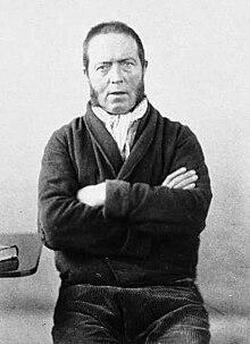 In 1843 Daniel M’Naghten had paranoid delusions that the Torres political party was trying to kill him. Daniel M’Naghten thought he shot Prime Minister Robert Peel who was the head of the Torres party. Peel had borrowed his carriage to Lord John Drummond. M’Naghten had killed Drummond. Seven psychiatrists (out of 7) testified that Daniel M’Naghten had paranoid delusions. The judge asked the jury if they needed to hear anymore, they said they did not. They didn’t even go back to the jury room. Instead, they huddled and found him not guilty by reason of insanity. M’Naghten was placed in Bedlam Hospital. Progress notes were required to be completed once a year. People were upset with M’Naghten ruling due to multiple assassination attempts on royalty and prime ministers between 1840 and 1843.
In 1843 Daniel M’Naghten had paranoid delusions that the Torres political party was trying to kill him. Daniel M’Naghten thought he shot Prime Minister Robert Peel who was the head of the Torres party. Peel had borrowed his carriage to Lord John Drummond. M’Naghten had killed Drummond. Seven psychiatrists (out of 7) testified that Daniel M’Naghten had paranoid delusions. The judge asked the jury if they needed to hear anymore, they said they did not. They didn’t even go back to the jury room. Instead, they huddled and found him not guilty by reason of insanity. M’Naghten was placed in Bedlam Hospital. Progress notes were required to be completed once a year. People were upset with M’Naghten ruling due to multiple assassination attempts on royalty and prime ministers between 1840 and 1843.
The M’Naghten case is significant because it was the first appellate case, which means it was the first case that was reevaluated by a group of judges. The ruling was that he was not of a stable mind to know the quality of his act. M’Naghten clarified the rule to have knowledge of the wrongfulness of a specific act. England uses legal wrongfulness while Canada uses moral wrongfulness. In the United States, 8 states use legal wrongfulness, and 6 states use moral wrongfulness. Most of the states don’t specify whether they are referring to legal or moral wrongfulness. Instead, they leave it to the collective consciousness, of the jury, to determine wrongfulness.
In 1886, Alabama was the first state to implement the “Irresistible Impulse Rule.” Was the perpetrator unable, due to a mental disease, to adhere to the right behavior?
This led to the policeman at your elbow question:
“If there were a policeman at your elbow at the time of the offense, would you have followed through?”
The question is in reference to controlling your behavior. The problem with this question is that if a man decided to kill his wife, and then kill himself, he would be unconcerned if a police officer was in the room. On March 30, 1981, John Hinkley shot Ronald Regan. There was outrage that Hinkley was found not guilty by reason of insanity. People became concerned about malingering. Malingering is faking illness. People do not want individuals to get by with murder.
On March 30, 1981, John Hinkley shot Ronald Regan. There was outrage that Hinkley was found not guilty by reason of insanity. People became concerned about malingering. Malingering is faking illness. People do not want individuals to get by with murder.  The Insanity Defense Reform Act was passed in 1984, and this is the rule used in Federal trial. Does a person, as a result of a severe mental defect, have an inability to appreciate the wrongfulness of their acts. There is no more reference to volition or “the ability to refrain.” Research shows that removing volition had no impact on reducing the number of successful insanity plea cases. However, the addition of the word “severe” has reduced the number of insanity defense wins. As a result of the publics’ frustration over John Hinkley’s plea, the defense needs to prove insanity by clearly and convincing evidence, making it more difficult. This has reduced the number of effective insanity defense pleas.
The Insanity Defense Reform Act was passed in 1984, and this is the rule used in Federal trial. Does a person, as a result of a severe mental defect, have an inability to appreciate the wrongfulness of their acts. There is no more reference to volition or “the ability to refrain.” Research shows that removing volition had no impact on reducing the number of successful insanity plea cases. However, the addition of the word “severe” has reduced the number of insanity defense wins. As a result of the publics’ frustration over John Hinkley’s plea, the defense needs to prove insanity by clearly and convincing evidence, making it more difficult. This has reduced the number of effective insanity defense pleas.
On March 23, 2020, (Kahler vs. Kansas) the Supreme Court reviewed whether it is constitutional for a state to not have an insanity defense. The case was based on a situation in Kansas where a man shot his estranged wife, daughters, and mother-in-law at a Thanksgiving meal he wasn’t invited to. The Supreme Court ruled that states are not required to have an insanity plea defense. Kansas has a mens rea approach (an understanding of wrongdoing), and the Supreme Court felt this was sufficient to meet constitutional guidelines. This ruling allows any state to get rid of the insanity plea if they choose.
The original case: In 1995, the Kansas legislature adopted what is referred to as the “mens rea approach” and abolished the insanity defense. This approach allows a defendant to be acquitted who lacks the requisite mental state for the crime, without consideration of the defendant's understanding of wrongfulness.
Crime due to compulsion, such as Jeffrey Dahmer’s compulsion to kill people, does not meet the criteria for insanity. Crime due to a personality disorder, such as antisocial personality disorder, does not meet the criteria for the insanity plea.
Basically, they are looking at the question, “Is the motive for the act psychotic?”
Another last thought: It is possible for dissociation to flow from an act, rather than be the cause of it. For example, if someone finds out that their partner is cheating, and in an act of rage, they kill their spouse. They can still be so overwhelmed with the act that they could be standing at the scene, holding the gun when the police arrive, saying, “I don’t remember.” In other words, illness can flow from an act as well as be the cause of it. If the psychotic episode is the result of flow from the act, the person is sane as they were sane when the act was committed. A crime out of jealousy is a sane act.
The patron saint of therapists was a young woman who lost her life fighting sexual abuse.
 St. Dymphna, the patron saint of therapists Dymphna was born to a pagan king and a Christian mother in Ireland. Her mother died when she was 14, and her father was driven mad with grief. He vowed that he would only marry a woman as beautiful as his first wife. When none could be found, he decided to marry his daughter.
St. Dymphna, the patron saint of therapists Dymphna was born to a pagan king and a Christian mother in Ireland. Her mother died when she was 14, and her father was driven mad with grief. He vowed that he would only marry a woman as beautiful as his first wife. When none could be found, he decided to marry his daughter.
When she heard of his plan, Dymphna fled Ireland with a priest, two servants and the king’s jester. (I do like that she took a comedian along.) The group hid in the town of Geel (in what is now Belgium), but Dymphna’s father found them and captured them. He ordered the priest beheaded and tried to persuade Dymphna to return to Ireland to marry him. When she refused, he drew his sword and beheaded her. She was just 15.
Dymphna received the crown of martyrdom around the year 620 and became known as the "Lily of Éire. In 1349, a church honoring St. Dymphna was built in Geel, and by 1480, so many pilgrims were arriving in need of treatment for mental ills, that the church was expanded. The expanded sanctuary was eventually overflowing again, leaving the townspeople to accept them into their homes, which began a tradition of care for the mentally ill that continues to this day.

 To summarize, this work has been going on for a long time, and I’m proud to work with so many people who stand between offenders and dire consequences for victims. We are making the world better.
To summarize, this work has been going on for a long time, and I’m proud to work with so many people who stand between offenders and dire consequences for victims. We are making the world better.
Thanks for listening,
Frank April Events listed below:
Thursday, April 18, 2024, Frank Weber will be presenting at the Minnesota Corrections Association (MCA) and Minnesota Association of County Probation Officers (MACPO), 5th Annual Juvenile Justice Conference on Addressing Clients with Mental llness and Behavioral Difficulties. The theme of this year’s MACPO conference is Forging Our Future: Keeping the Focus on Today’s Youth. The conference is being held at the Maplewood Community Center which is located at 2100 White Bear Avenue, Maplewood, Minnesota, 55109.
Monday, April 22, 2024, Forensic Psychologist, Frank F. Weber, will be at the Melrose Public Library in Melrose, speaking from 6:00 to 7:00 p.m. on the writing of True Crime, forensic work and his latest book. The Haunted House of Hillman {H2 OH} is based on the true story of teens daring each other to return to the home of an unsolved murder. The killer begins to view the home as a victim magnet. Frank will share the amazing stories of victim survival that led to the resolution of this true crime thriller. Frank will give a live demonstration of a lie detector test (volunteer a friend). Frank will be at the library before and after his presentation answering questions on his work, signing and selling his books and discussing the latest forensic tools. The Melrose Public Library (a Great River Regional Library) is located at 225 1st Street Northeast, Melrose, MN 56352. Saturday, April 27, 2024, Forensic Psychologist, Frank F. Weber, will be at Jack Pine Brewery, speaking from 5:00 to 6:00 p.m. on the writing of true crime, and forensic work, The Haunted House of Hillman {H2 OH} is a true story that involved teens daring each other to return to the rural home of an unsolved crime. Frank will share the amazing stories of victim survival that led to the resolution of this true crime thriller. Frank will demonstrate a lie detector test (volunteer a friend). You will also get some information on his next release (in June), Scandal of Vandals. Frank will be at Jack Pine from 3:00 to 8:00 p.m. signing and selling his books and answering questions on the latest forensic tools. Jack Pine Brewery is located at: 15593 Edgewood Drive North, Baxter, Minnesota, 56425.
Examples of involuntary acts include:
If you have a grand mal seizure and accidently break someone’s nose, that is an involuntary act.
 The story with this picture is that her partner accidently broke her nose during a dance. This would be a voluntary act. 2. If you commit a crime while sleepwalking that is an involuntary act.
The story with this picture is that her partner accidently broke her nose during a dance. This would be a voluntary act. 2. If you commit a crime while sleepwalking that is an involuntary act.  3. Interestingly enough, if someone throws a hand grenade in the room, you pick it up and throw it outside, and it kills someone, that is also an involuntary act.
3. Interestingly enough, if someone throws a hand grenade in the room, you pick it up and throw it outside, and it kills someone, that is also an involuntary act.  Mens rea means understanding of the crime. Some states, Kansas for example have a mens rea condition, but no insanity defense.
Mens rea means understanding of the crime. Some states, Kansas for example have a mens rea condition, but no insanity defense. A person could still be held accountable, but due to diminished capacity, may lack a complete understanding of the crime. Subsequently, would be guilty but could have a lesser sentence.
Example: A mild intellectually disabled person who knew it was wrong but agreed to do it anyway.
 Pic of infant wild beast. The first case involving the insanity plea occurred in 1724 in England, with a man referred to as “Mad” Ned Arnold. He believed that Lord Onslow was at times occupying his body. Ned shot and wounded Lord Onslow. The criteria for insanity were the person had no better understanding than an infant, a brut (an example would be a domesticated animal like an ox), or a wild beast (tiger). Ned had persecutory delusions and he shot an injured Onslow to keep him from inhabiting his body. The infant, brut, or wild beast criteria, stood for 75 years until 1800.
Pic of infant wild beast. The first case involving the insanity plea occurred in 1724 in England, with a man referred to as “Mad” Ned Arnold. He believed that Lord Onslow was at times occupying his body. Ned shot and wounded Lord Onslow. The criteria for insanity were the person had no better understanding than an infant, a brut (an example would be a domesticated animal like an ox), or a wild beast (tiger). Ned had persecutory delusions and he shot an injured Onslow to keep him from inhabiting his body. The infant, brut, or wild beast criteria, stood for 75 years until 1800.  Pic of infant brut In 1800, a man named Hadfield had the delusion that he had to die o save the world. He requested the state execute him. They had no cause, so he shot at King George III. He purposely shot over the head of the king knowing this offense was a death penalty offense. Hadfield was a veteran who had a hole in his skull from a sword as a result of a battle. (His attorney walked him in front of the jury and had each jury member feel the hole so they would be aware that he was not making up the story.) His attorney argued that a new criterion needed to be added into the insanity plea. That criteria was “an off spring of a delusion.” An act that was “an off spring of a delusion” could be determined insane. Hatfield was found not guilty by reason of insanity. Britton past the Criminal Lunatics Act of 1800, which allowed for delusion to be an insanity plea, but taking the plea resulted in a mental health institution. Hadfield was sent to Bethlehem Hospital, which is frequently referred to as Bedlam.
Pic of infant brut In 1800, a man named Hadfield had the delusion that he had to die o save the world. He requested the state execute him. They had no cause, so he shot at King George III. He purposely shot over the head of the king knowing this offense was a death penalty offense. Hadfield was a veteran who had a hole in his skull from a sword as a result of a battle. (His attorney walked him in front of the jury and had each jury member feel the hole so they would be aware that he was not making up the story.) His attorney argued that a new criterion needed to be added into the insanity plea. That criteria was “an off spring of a delusion.” An act that was “an off spring of a delusion” could be determined insane. Hatfield was found not guilty by reason of insanity. Britton past the Criminal Lunatics Act of 1800, which allowed for delusion to be an insanity plea, but taking the plea resulted in a mental health institution. Hadfield was sent to Bethlehem Hospital, which is frequently referred to as Bedlam.
Queen Victoria had 7 attempts on her life (being a monarch is clearly a high-risk occupation). In 1840, one of the offenders used the argument that it was an irresistible impulse. The jury ruled that if the behavior was the result of a disease creating a power within him that he could not resist, he was not responsible. (This justification would later be dismissed as a defense for good reason. Jeffery Dahmer could argue that killing was the result of an irresistible urge.) Queen Victoria (While queen she married Albert of Saxe-Coburg and Gotha. It was the 1st marriage of a reigning queen in 300 years.)
Daniel M’Naghten
 In 1843 Daniel M’Naghten had paranoid delusions that the Torres political party was trying to kill him. Daniel M’Naghten thought he shot Prime Minister Robert Peel who was the head of the Torres party. Peel had borrowed his carriage to Lord John Drummond. M’Naghten had killed Drummond. Seven psychiatrists (out of 7) testified that Daniel M’Naghten had paranoid delusions. The judge asked the jury if they needed to hear anymore, they said they did not. They didn’t even go back to the jury room. Instead, they huddled and found him not guilty by reason of insanity. M’Naghten was placed in Bedlam Hospital. Progress notes were required to be completed once a year. People were upset with M’Naghten ruling due to multiple assassination attempts on royalty and prime ministers between 1840 and 1843.
In 1843 Daniel M’Naghten had paranoid delusions that the Torres political party was trying to kill him. Daniel M’Naghten thought he shot Prime Minister Robert Peel who was the head of the Torres party. Peel had borrowed his carriage to Lord John Drummond. M’Naghten had killed Drummond. Seven psychiatrists (out of 7) testified that Daniel M’Naghten had paranoid delusions. The judge asked the jury if they needed to hear anymore, they said they did not. They didn’t even go back to the jury room. Instead, they huddled and found him not guilty by reason of insanity. M’Naghten was placed in Bedlam Hospital. Progress notes were required to be completed once a year. People were upset with M’Naghten ruling due to multiple assassination attempts on royalty and prime ministers between 1840 and 1843.The M’Naghten case is significant because it was the first appellate case, which means it was the first case that was reevaluated by a group of judges. The ruling was that he was not of a stable mind to know the quality of his act. M’Naghten clarified the rule to have knowledge of the wrongfulness of a specific act. England uses legal wrongfulness while Canada uses moral wrongfulness. In the United States, 8 states use legal wrongfulness, and 6 states use moral wrongfulness. Most of the states don’t specify whether they are referring to legal or moral wrongfulness. Instead, they leave it to the collective consciousness, of the jury, to determine wrongfulness.
In 1886, Alabama was the first state to implement the “Irresistible Impulse Rule.” Was the perpetrator unable, due to a mental disease, to adhere to the right behavior?
This led to the policeman at your elbow question:
“If there were a policeman at your elbow at the time of the offense, would you have followed through?”
The question is in reference to controlling your behavior. The problem with this question is that if a man decided to kill his wife, and then kill himself, he would be unconcerned if a police officer was in the room.
 On March 30, 1981, John Hinkley shot Ronald Regan. There was outrage that Hinkley was found not guilty by reason of insanity. People became concerned about malingering. Malingering is faking illness. People do not want individuals to get by with murder.
On March 30, 1981, John Hinkley shot Ronald Regan. There was outrage that Hinkley was found not guilty by reason of insanity. People became concerned about malingering. Malingering is faking illness. People do not want individuals to get by with murder.  The Insanity Defense Reform Act was passed in 1984, and this is the rule used in Federal trial. Does a person, as a result of a severe mental defect, have an inability to appreciate the wrongfulness of their acts. There is no more reference to volition or “the ability to refrain.” Research shows that removing volition had no impact on reducing the number of successful insanity plea cases. However, the addition of the word “severe” has reduced the number of insanity defense wins. As a result of the publics’ frustration over John Hinkley’s plea, the defense needs to prove insanity by clearly and convincing evidence, making it more difficult. This has reduced the number of effective insanity defense pleas.
The Insanity Defense Reform Act was passed in 1984, and this is the rule used in Federal trial. Does a person, as a result of a severe mental defect, have an inability to appreciate the wrongfulness of their acts. There is no more reference to volition or “the ability to refrain.” Research shows that removing volition had no impact on reducing the number of successful insanity plea cases. However, the addition of the word “severe” has reduced the number of insanity defense wins. As a result of the publics’ frustration over John Hinkley’s plea, the defense needs to prove insanity by clearly and convincing evidence, making it more difficult. This has reduced the number of effective insanity defense pleas. On March 23, 2020, (Kahler vs. Kansas) the Supreme Court reviewed whether it is constitutional for a state to not have an insanity defense. The case was based on a situation in Kansas where a man shot his estranged wife, daughters, and mother-in-law at a Thanksgiving meal he wasn’t invited to. The Supreme Court ruled that states are not required to have an insanity plea defense. Kansas has a mens rea approach (an understanding of wrongdoing), and the Supreme Court felt this was sufficient to meet constitutional guidelines. This ruling allows any state to get rid of the insanity plea if they choose.
The original case: In 1995, the Kansas legislature adopted what is referred to as the “mens rea approach” and abolished the insanity defense. This approach allows a defendant to be acquitted who lacks the requisite mental state for the crime, without consideration of the defendant's understanding of wrongfulness.
Crime due to compulsion, such as Jeffrey Dahmer’s compulsion to kill people, does not meet the criteria for insanity. Crime due to a personality disorder, such as antisocial personality disorder, does not meet the criteria for the insanity plea.
Basically, they are looking at the question, “Is the motive for the act psychotic?”
Another last thought: It is possible for dissociation to flow from an act, rather than be the cause of it. For example, if someone finds out that their partner is cheating, and in an act of rage, they kill their spouse. They can still be so overwhelmed with the act that they could be standing at the scene, holding the gun when the police arrive, saying, “I don’t remember.” In other words, illness can flow from an act as well as be the cause of it. If the psychotic episode is the result of flow from the act, the person is sane as they were sane when the act was committed. A crime out of jealousy is a sane act.
The patron saint of therapists was a young woman who lost her life fighting sexual abuse.
 St. Dymphna, the patron saint of therapists Dymphna was born to a pagan king and a Christian mother in Ireland. Her mother died when she was 14, and her father was driven mad with grief. He vowed that he would only marry a woman as beautiful as his first wife. When none could be found, he decided to marry his daughter.
St. Dymphna, the patron saint of therapists Dymphna was born to a pagan king and a Christian mother in Ireland. Her mother died when she was 14, and her father was driven mad with grief. He vowed that he would only marry a woman as beautiful as his first wife. When none could be found, he decided to marry his daughter.When she heard of his plan, Dymphna fled Ireland with a priest, two servants and the king’s jester. (I do like that she took a comedian along.) The group hid in the town of Geel (in what is now Belgium), but Dymphna’s father found them and captured them. He ordered the priest beheaded and tried to persuade Dymphna to return to Ireland to marry him. When she refused, he drew his sword and beheaded her. She was just 15.
Dymphna received the crown of martyrdom around the year 620 and became known as the "Lily of Éire. In 1349, a church honoring St. Dymphna was built in Geel, and by 1480, so many pilgrims were arriving in need of treatment for mental ills, that the church was expanded. The expanded sanctuary was eventually overflowing again, leaving the townspeople to accept them into their homes, which began a tradition of care for the mentally ill that continues to this day.


 To summarize, this work has been going on for a long time, and I’m proud to work with so many people who stand between offenders and dire consequences for victims. We are making the world better.
To summarize, this work has been going on for a long time, and I’m proud to work with so many people who stand between offenders and dire consequences for victims. We are making the world better.Thanks for listening,
Frank April Events listed below:
Thursday, April 18, 2024, Frank Weber will be presenting at the Minnesota Corrections Association (MCA) and Minnesota Association of County Probation Officers (MACPO), 5th Annual Juvenile Justice Conference on Addressing Clients with Mental llness and Behavioral Difficulties. The theme of this year’s MACPO conference is Forging Our Future: Keeping the Focus on Today’s Youth. The conference is being held at the Maplewood Community Center which is located at 2100 White Bear Avenue, Maplewood, Minnesota, 55109.
Monday, April 22, 2024, Forensic Psychologist, Frank F. Weber, will be at the Melrose Public Library in Melrose, speaking from 6:00 to 7:00 p.m. on the writing of True Crime, forensic work and his latest book. The Haunted House of Hillman {H2 OH} is based on the true story of teens daring each other to return to the home of an unsolved murder. The killer begins to view the home as a victim magnet. Frank will share the amazing stories of victim survival that led to the resolution of this true crime thriller. Frank will give a live demonstration of a lie detector test (volunteer a friend). Frank will be at the library before and after his presentation answering questions on his work, signing and selling his books and discussing the latest forensic tools. The Melrose Public Library (a Great River Regional Library) is located at 225 1st Street Northeast, Melrose, MN 56352. Saturday, April 27, 2024, Forensic Psychologist, Frank F. Weber, will be at Jack Pine Brewery, speaking from 5:00 to 6:00 p.m. on the writing of true crime, and forensic work, The Haunted House of Hillman {H2 OH} is a true story that involved teens daring each other to return to the rural home of an unsolved crime. Frank will share the amazing stories of victim survival that led to the resolution of this true crime thriller. Frank will demonstrate a lie detector test (volunteer a friend). You will also get some information on his next release (in June), Scandal of Vandals. Frank will be at Jack Pine from 3:00 to 8:00 p.m. signing and selling his books and answering questions on the latest forensic tools. Jack Pine Brewery is located at: 15593 Edgewood Drive North, Baxter, Minnesota, 56425.
Published on April 16, 2024 08:41
April 7, 2024
April 2024
An award, a thank you, and a letter…
The Minnesota Psychological Association’s Executive Committee has selected Frank F. Weber the winner of the 2024 MPA Susan T. Rydell Lifetime Achievement Award for Outstanding Contribution to Psychology award. The award is the biggest award given by the Minnesota Psychological Association and it is given to one person annually. The committee was moved by Frank Weber’s significant contributions to the field of psychology through his work to reduce sexual abuse in Minnesota as well as his teaching and writing. The MPA Awards reception was held on Thursday, April 4, 2024, during the Minnesota Psychological Convention held at the Sheraton in Bloomington.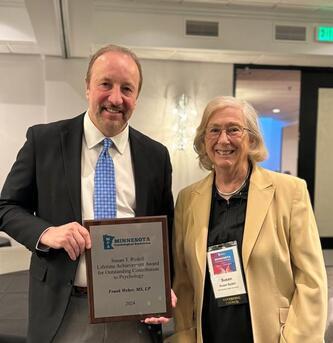
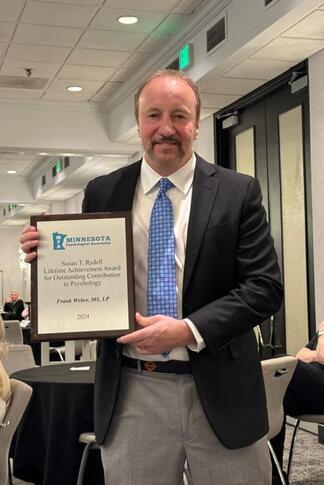 Frank is picture with Dr. Susan Rydell. Dr. Rydell shared her remarkable expertise in corrections for 50 years.
Frank is picture with Dr. Susan Rydell. Dr. Rydell shared her remarkable expertise in corrections for 50 years. 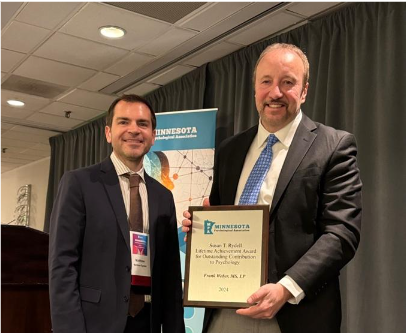

 Frank is pictured with his wife, Brenda, and some of the outstanding professionals he works with including Crystal Anthony, Katie Kissner, and Dina Maertons. He was informed the vote was unanimous for his recipient of the award. Frank Weber started his psychological career as a Behavior Analyst at Brainerd Regional Center and went on to complete graduate degrees in both Clinical Psychology and School Counseling. Frank was promoted to psychologist, and then to the Director of Psychological Services, before leaving to start his own company, CORE Professional Services. CORE provides a variety of assessments to law enforcement, parenting evaluations and forensic cases.
Frank is pictured with his wife, Brenda, and some of the outstanding professionals he works with including Crystal Anthony, Katie Kissner, and Dina Maertons. He was informed the vote was unanimous for his recipient of the award. Frank Weber started his psychological career as a Behavior Analyst at Brainerd Regional Center and went on to complete graduate degrees in both Clinical Psychology and School Counseling. Frank was promoted to psychologist, and then to the Director of Psychological Services, before leaving to start his own company, CORE Professional Services. CORE provides a variety of assessments to law enforcement, parenting evaluations and forensic cases.  Frank has completed assessments in homicide, sexual assault, and domestic abuse cases. He has profiled cold case homicides and been interviewed on investigative television shows. Frank was a regular consultant on Crime Door TV. CORE provides therapy to individuals adjusting to life in the community after incarceration. Frank developed a program that involves individual, couples and group therapy, classes on healthy relationships, polygraph testing, working closely with probation to encourage honest change. In the 29 years the CORE program has existed, 97% of the graduates were never convicted of an offense again. Frank has previously received the President’s Award from the MN Correctional Association for his forensic work.
Frank has completed assessments in homicide, sexual assault, and domestic abuse cases. He has profiled cold case homicides and been interviewed on investigative television shows. Frank was a regular consultant on Crime Door TV. CORE provides therapy to individuals adjusting to life in the community after incarceration. Frank developed a program that involves individual, couples and group therapy, classes on healthy relationships, polygraph testing, working closely with probation to encourage honest change. In the 29 years the CORE program has existed, 97% of the graduates were never convicted of an offense again. Frank has previously received the President’s Award from the MN Correctional Association for his forensic work. 
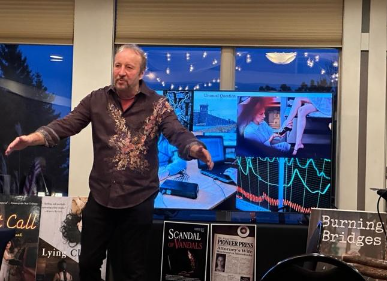 Frank Weber began teaching college Psychology and Sociology courses at age 25 and has taught a course or two every semester for 38 years. His courses through Central Lakes College remain popular. Frank wrote and published a Human Development textbook in 2021 and will be publishing the 2nd addition in 2025.
Frank Weber began teaching college Psychology and Sociology courses at age 25 and has taught a course or two every semester for 38 years. His courses through Central Lakes College remain popular. Frank wrote and published a Human Development textbook in 2021 and will be publishing the 2nd addition in 2025.  For a hobby, Frank has written award winning mysteries based on True Crime cases including:
For a hobby, Frank has written award winning mysteries based on True Crime cases including:
Murder Book (2017)
The I-94 Murders (2018)
Last Call (2019)
Lying Close (2020)
Burning Bridges (2021)
Black and Blue (2022)
The Haunted House of Hillman (2023)
Scandal of Vandals (2024)
 Following the event Frank and friends stopped at Broken Clock Brewing and engaged in a pinball tournament. Brenda won! A note from Frank:
Following the event Frank and friends stopped at Broken Clock Brewing and engaged in a pinball tournament. Brenda won! A note from Frank:
Thank you all for your kindness. There have been so many kind responses on Facebook. I read them all and appreciate every one. This isn’t the kind of work you do for recognition, as you typically only get called out when people think you’re wrong. I do it, and everyone I work with does it, because we want to make the world better—safer. Helping others gives my life meaning and when I think of my family, colleagues, friends and community I realize I have been paid back more than tenfold. Success only occurs with help from others. People make sacrifices of time and give me the benefit of the doubt when I’m not at my best.
Sincerely,
Frank Weber
One of the letters sent to the Board regarding Frank Weber
I have worked for Frank Weber for more than 25 years. His curriculum vitae and outward achievements certainly speak for themselves and do not require highlighting; nevertheless, these are not the reason underlying my decision to work for him. Frank is a man who has thoughtfully considered his own morals and values, and who follows these with a steady integrity, personally and professionally. Yes, Frank has shepherded countless young adults into the field of psychology, as a teacher, a mentor, and enthusiastic encourager; yet, I have witnessed Frank offer the same support to those who wish to pursue other fields, nurturing their passions and creating opportunities for their success, sometimes singlehandedly. Yes, Frank has devoted his career to serving and advocating for an underserved and much in need population. I have watched, firsthand, Frank work from 5:00am, and past midnight, often on the same day, to offer those services to communities in need. I have seen Frank drive five hours in a blizzard to offer therapeutic services. Perhaps more notable to me, however, is that I have witnessed Frank drive five hours home over the same icy roads, when a hotel may have been more reasonable, because it is that important to him to be home with his family. Frank is undoubtably a man of generosity, who wants others to share in his success and who wants to use his success to elevate the lives and dreams of others. He has done so for those he employs and guides as a Clinical Director, the students in his classes, those he has coached, the many individuals impacted by his writing, and the thousands of clients served through CORE Professional Services throughout the years. In the field of psychology, it is our being, our personhood, that is our primary instrument. All professional achievements and accolades aside, I work for Frank Weber because of the person who he is. Frank cares for and elevates all those who have the privilege to be in contact with him.
Samantha
The Minnesota Psychological Association’s Executive Committee has selected Frank F. Weber the winner of the 2024 MPA Susan T. Rydell Lifetime Achievement Award for Outstanding Contribution to Psychology award. The award is the biggest award given by the Minnesota Psychological Association and it is given to one person annually. The committee was moved by Frank Weber’s significant contributions to the field of psychology through his work to reduce sexual abuse in Minnesota as well as his teaching and writing. The MPA Awards reception was held on Thursday, April 4, 2024, during the Minnesota Psychological Convention held at the Sheraton in Bloomington.

 Frank is picture with Dr. Susan Rydell. Dr. Rydell shared her remarkable expertise in corrections for 50 years.
Frank is picture with Dr. Susan Rydell. Dr. Rydell shared her remarkable expertise in corrections for 50 years. 

 Frank is pictured with his wife, Brenda, and some of the outstanding professionals he works with including Crystal Anthony, Katie Kissner, and Dina Maertons. He was informed the vote was unanimous for his recipient of the award. Frank Weber started his psychological career as a Behavior Analyst at Brainerd Regional Center and went on to complete graduate degrees in both Clinical Psychology and School Counseling. Frank was promoted to psychologist, and then to the Director of Psychological Services, before leaving to start his own company, CORE Professional Services. CORE provides a variety of assessments to law enforcement, parenting evaluations and forensic cases.
Frank is pictured with his wife, Brenda, and some of the outstanding professionals he works with including Crystal Anthony, Katie Kissner, and Dina Maertons. He was informed the vote was unanimous for his recipient of the award. Frank Weber started his psychological career as a Behavior Analyst at Brainerd Regional Center and went on to complete graduate degrees in both Clinical Psychology and School Counseling. Frank was promoted to psychologist, and then to the Director of Psychological Services, before leaving to start his own company, CORE Professional Services. CORE provides a variety of assessments to law enforcement, parenting evaluations and forensic cases.  Frank has completed assessments in homicide, sexual assault, and domestic abuse cases. He has profiled cold case homicides and been interviewed on investigative television shows. Frank was a regular consultant on Crime Door TV. CORE provides therapy to individuals adjusting to life in the community after incarceration. Frank developed a program that involves individual, couples and group therapy, classes on healthy relationships, polygraph testing, working closely with probation to encourage honest change. In the 29 years the CORE program has existed, 97% of the graduates were never convicted of an offense again. Frank has previously received the President’s Award from the MN Correctional Association for his forensic work.
Frank has completed assessments in homicide, sexual assault, and domestic abuse cases. He has profiled cold case homicides and been interviewed on investigative television shows. Frank was a regular consultant on Crime Door TV. CORE provides therapy to individuals adjusting to life in the community after incarceration. Frank developed a program that involves individual, couples and group therapy, classes on healthy relationships, polygraph testing, working closely with probation to encourage honest change. In the 29 years the CORE program has existed, 97% of the graduates were never convicted of an offense again. Frank has previously received the President’s Award from the MN Correctional Association for his forensic work. 
 Frank Weber began teaching college Psychology and Sociology courses at age 25 and has taught a course or two every semester for 38 years. His courses through Central Lakes College remain popular. Frank wrote and published a Human Development textbook in 2021 and will be publishing the 2nd addition in 2025.
Frank Weber began teaching college Psychology and Sociology courses at age 25 and has taught a course or two every semester for 38 years. His courses through Central Lakes College remain popular. Frank wrote and published a Human Development textbook in 2021 and will be publishing the 2nd addition in 2025.  For a hobby, Frank has written award winning mysteries based on True Crime cases including:
For a hobby, Frank has written award winning mysteries based on True Crime cases including:Murder Book (2017)
The I-94 Murders (2018)
Last Call (2019)
Lying Close (2020)
Burning Bridges (2021)
Black and Blue (2022)
The Haunted House of Hillman (2023)
Scandal of Vandals (2024)
 Following the event Frank and friends stopped at Broken Clock Brewing and engaged in a pinball tournament. Brenda won! A note from Frank:
Following the event Frank and friends stopped at Broken Clock Brewing and engaged in a pinball tournament. Brenda won! A note from Frank:Thank you all for your kindness. There have been so many kind responses on Facebook. I read them all and appreciate every one. This isn’t the kind of work you do for recognition, as you typically only get called out when people think you’re wrong. I do it, and everyone I work with does it, because we want to make the world better—safer. Helping others gives my life meaning and when I think of my family, colleagues, friends and community I realize I have been paid back more than tenfold. Success only occurs with help from others. People make sacrifices of time and give me the benefit of the doubt when I’m not at my best.
Sincerely,
Frank Weber
One of the letters sent to the Board regarding Frank Weber
I have worked for Frank Weber for more than 25 years. His curriculum vitae and outward achievements certainly speak for themselves and do not require highlighting; nevertheless, these are not the reason underlying my decision to work for him. Frank is a man who has thoughtfully considered his own morals and values, and who follows these with a steady integrity, personally and professionally. Yes, Frank has shepherded countless young adults into the field of psychology, as a teacher, a mentor, and enthusiastic encourager; yet, I have witnessed Frank offer the same support to those who wish to pursue other fields, nurturing their passions and creating opportunities for their success, sometimes singlehandedly. Yes, Frank has devoted his career to serving and advocating for an underserved and much in need population. I have watched, firsthand, Frank work from 5:00am, and past midnight, often on the same day, to offer those services to communities in need. I have seen Frank drive five hours in a blizzard to offer therapeutic services. Perhaps more notable to me, however, is that I have witnessed Frank drive five hours home over the same icy roads, when a hotel may have been more reasonable, because it is that important to him to be home with his family. Frank is undoubtably a man of generosity, who wants others to share in his success and who wants to use his success to elevate the lives and dreams of others. He has done so for those he employs and guides as a Clinical Director, the students in his classes, those he has coached, the many individuals impacted by his writing, and the thousands of clients served through CORE Professional Services throughout the years. In the field of psychology, it is our being, our personhood, that is our primary instrument. All professional achievements and accolades aside, I work for Frank Weber because of the person who he is. Frank cares for and elevates all those who have the privilege to be in contact with him.
Samantha
Published on April 07, 2024 18:49
March 8, 2024
March 2024
Wabasha caves in St. Paul: Glass, Mushrooms, Mafia & Wedding venue, and a guest appearance in my next book.
 The extensive cave system had been carved into the hillside through silica sand mining adventures back in the 1800’s. Silica is used to make glass.
The extensive cave system had been carved into the hillside through silica sand mining adventures back in the 1800’s. Silica is used to make glass.
 A French immigrant Albert Mouchnotte began growing mushrooms in the caves and it was so successful the area eventually became known as “Mushroom Valley.”
A French immigrant Albert Mouchnotte began growing mushrooms in the caves and it was so successful the area eventually became known as “Mushroom Valley.”
 During Prohibition, the caves were converted to a Speak Easy visited by gangsters such as John Dillinger, “Baby Face” Nelson, Ma Barker Alvin “Creepy” Karips. St. Paul Police Chief John O’Connor made St. Paul a safe haven for gangsters, with the agreement they wouldn’t kill people here. It was referred to as the O’Connor system.
During Prohibition, the caves were converted to a Speak Easy visited by gangsters such as John Dillinger, “Baby Face” Nelson, Ma Barker Alvin “Creepy” Karips. St. Paul Police Chief John O’Connor made St. Paul a safe haven for gangsters, with the agreement they wouldn’t kill people here. It was referred to as the O’Connor system.
 Of course, you can’t have gangsters congregate for long before things go bad. In 1934 a waitress in the kitchen heard the popping of a Tommy-gun and when she returned to the dining area saw three bullet ridden bodies with their gambling chips still sitting on the table.
Of course, you can’t have gangsters congregate for long before things go bad. In 1934 a waitress in the kitchen heard the popping of a Tommy-gun and when she returned to the dining area saw three bullet ridden bodies with their gambling chips still sitting on the table. 
 She ran outside and called the police. The police arrived and after a couple hours on the scene she was verbally reprimanded for making a false report. The bodies were gone, and the scene had been cleaned. However, the bullet holes in the fireplace are still visible to this day. It was a time when the St. Paul police were known to carry an extra cop uniform to scenes in case a gangster needed to be snuck out.
She ran outside and called the police. The police arrived and after a couple hours on the scene she was verbally reprimanded for making a false report. The bodies were gone, and the scene had been cleaned. However, the bullet holes in the fireplace are still visible to this day. It was a time when the St. Paul police were known to carry an extra cop uniform to scenes in case a gangster needed to be snuck out.
 The bodies are believed to buried in the back caves. The Minneapolis Tribune listed the caves as “the most haunted place in Minnesota.” People claim you can hear footsteps walking behind you at times only to discover no one is there.
The bodies are believed to buried in the back caves. The Minneapolis Tribune listed the caves as “the most haunted place in Minnesota.” People claim you can hear footsteps walking behind you at times only to discover no one is there.
 Of course there will be a scene in my book, The Sun, in the caves.
Of course there will be a scene in my book, The Sun, in the caves.  After you leave the caves, you can head down the street to discuss the adventure at Wabasha Brewing! I do need to return to Wabasha brewing again and have a taste of their Altbier Amber.
After you leave the caves, you can head down the street to discuss the adventure at Wabasha Brewing! I do need to return to Wabasha brewing again and have a taste of their Altbier Amber.
I apologize to readers for being derelict in my blogs recently. I’m working with a new editor who has been very helpful, and we are trying to get Scandal of Vandals, right. I have listened to my readers who have suggested my previous books weren’t edited as cleanly as they should have been. This is obviously my fault, as I get too excited about getting a book out there, and do not allow ample time for editing. I’m not making that mistake this again. The good news is Scandal of Vandals will be followed with a mystery called The Sun. While the editor is working on Scandal, I’ve been writing The Sun, so it shouldn’t be too long before it is available also.
Here is what I need:
I need to get the cover shot of The Sun. I need a location. I am looking for a house, or building with high windows, shining on a floor at sunrise or sunset. (see below) It can be in a smaller space than these pics. If someone can find me a setting that leads to being used on the cover, I will give her/him/they a guest appearance in the book.
Thanks for listening,
Frank
 Below is an audio link for my interview on WJON 'It matters' with Kelly Cordes
Below is an audio link for my interview on WJON 'It matters' with Kelly Cordes
 The extensive cave system had been carved into the hillside through silica sand mining adventures back in the 1800’s. Silica is used to make glass.
The extensive cave system had been carved into the hillside through silica sand mining adventures back in the 1800’s. Silica is used to make glass. A French immigrant Albert Mouchnotte began growing mushrooms in the caves and it was so successful the area eventually became known as “Mushroom Valley.”
A French immigrant Albert Mouchnotte began growing mushrooms in the caves and it was so successful the area eventually became known as “Mushroom Valley.”  During Prohibition, the caves were converted to a Speak Easy visited by gangsters such as John Dillinger, “Baby Face” Nelson, Ma Barker Alvin “Creepy” Karips. St. Paul Police Chief John O’Connor made St. Paul a safe haven for gangsters, with the agreement they wouldn’t kill people here. It was referred to as the O’Connor system.
During Prohibition, the caves were converted to a Speak Easy visited by gangsters such as John Dillinger, “Baby Face” Nelson, Ma Barker Alvin “Creepy” Karips. St. Paul Police Chief John O’Connor made St. Paul a safe haven for gangsters, with the agreement they wouldn’t kill people here. It was referred to as the O’Connor system.  Of course, you can’t have gangsters congregate for long before things go bad. In 1934 a waitress in the kitchen heard the popping of a Tommy-gun and when she returned to the dining area saw three bullet ridden bodies with their gambling chips still sitting on the table.
Of course, you can’t have gangsters congregate for long before things go bad. In 1934 a waitress in the kitchen heard the popping of a Tommy-gun and when she returned to the dining area saw three bullet ridden bodies with their gambling chips still sitting on the table. 
 She ran outside and called the police. The police arrived and after a couple hours on the scene she was verbally reprimanded for making a false report. The bodies were gone, and the scene had been cleaned. However, the bullet holes in the fireplace are still visible to this day. It was a time when the St. Paul police were known to carry an extra cop uniform to scenes in case a gangster needed to be snuck out.
She ran outside and called the police. The police arrived and after a couple hours on the scene she was verbally reprimanded for making a false report. The bodies were gone, and the scene had been cleaned. However, the bullet holes in the fireplace are still visible to this day. It was a time when the St. Paul police were known to carry an extra cop uniform to scenes in case a gangster needed to be snuck out.  The bodies are believed to buried in the back caves. The Minneapolis Tribune listed the caves as “the most haunted place in Minnesota.” People claim you can hear footsteps walking behind you at times only to discover no one is there.
The bodies are believed to buried in the back caves. The Minneapolis Tribune listed the caves as “the most haunted place in Minnesota.” People claim you can hear footsteps walking behind you at times only to discover no one is there. Of course there will be a scene in my book, The Sun, in the caves.
Of course there will be a scene in my book, The Sun, in the caves.  After you leave the caves, you can head down the street to discuss the adventure at Wabasha Brewing! I do need to return to Wabasha brewing again and have a taste of their Altbier Amber.
After you leave the caves, you can head down the street to discuss the adventure at Wabasha Brewing! I do need to return to Wabasha brewing again and have a taste of their Altbier Amber.I apologize to readers for being derelict in my blogs recently. I’m working with a new editor who has been very helpful, and we are trying to get Scandal of Vandals, right. I have listened to my readers who have suggested my previous books weren’t edited as cleanly as they should have been. This is obviously my fault, as I get too excited about getting a book out there, and do not allow ample time for editing. I’m not making that mistake this again. The good news is Scandal of Vandals will be followed with a mystery called The Sun. While the editor is working on Scandal, I’ve been writing The Sun, so it shouldn’t be too long before it is available also.
Here is what I need:
I need to get the cover shot of The Sun. I need a location. I am looking for a house, or building with high windows, shining on a floor at sunrise or sunset. (see below) It can be in a smaller space than these pics. If someone can find me a setting that leads to being used on the cover, I will give her/him/they a guest appearance in the book.
Thanks for listening,
Frank
 Below is an audio link for my interview on WJON 'It matters' with Kelly Cordes
Below is an audio link for my interview on WJON 'It matters' with Kelly Cordes
Published on March 08, 2024 10:26
January 23, 2024
February 2024
Missing person report leads to resolution of 4 murders.  Eunsoon Jun was a friendly and creative young woman who traveled the world by herself. She was also described as naïve and trusting. Her mother was concerned her daughter had stopped talking to her. Eunsoon was living with Larry Vanner. Every time she attempted to call her daughter, Larry would answer the phone and tell her Eunsoon was elsewhere. Larry finally told her that Eunsoon didn’t want to talk to her anymore. At that point, Eunsoon’s mother called the Sheriff.
Eunsoon Jun was a friendly and creative young woman who traveled the world by herself. She was also described as naïve and trusting. Her mother was concerned her daughter had stopped talking to her. Eunsoon was living with Larry Vanner. Every time she attempted to call her daughter, Larry would answer the phone and tell her Eunsoon was elsewhere. Larry finally told her that Eunsoon didn’t want to talk to her anymore. At that point, Eunsoon’s mother called the Sheriff.
 Roxane Gruenheid
Roxane Gruenheid
Roxane Gruenheid, Contra Costa Sheriff’s County Investigator had Larry fingerprinted. They discovered there was a warrant out for his arrest under the name Curtis Mayo Kimball, for child abandonment. He had abandoned a 5-year-old girl he referred to as his daughter “Lisa”. It would later be discovered the man wasn’t Larry Vanner, or Curtis Kimball. Instead, his name was Terry Rasmussen and he had abandoned a child in California and fled. (pic is of a potter, not Eunsoon)
(pic is of a potter, not Eunsoon)
When investigators went through Eunsoon Jun’s home, there was no women’s clothing. Eunsoon Jun was an avid potter and there was pottery in various stages of completion in the garage. When they look in the crawl space, they find a body covered with cat litter. Curtis pleads guilty to her murder.
Roxane Gruenheid felt Curtis was hiding something and couldn’t let go of the case. She had Lisa, DNA tested, and discovered Lisa was no relation to Curtis Kimball. Now the mystery was, “Whose daughter is she?” Denise Beaudin
Denise Beaudin
In November of 1981, Denise Beaudin of Manchester, New Hampshire, went missing shortly after Thanksgiving with her 6-month-old daughter and her boyfriend, Robert T. Evans. (It would later be discovered his real name was Terry Rasmussen). It had been hypothesized that “Lisa” was Denise Beudin’s daughter (5 years after her disappearance). DNA testing has now proved this was the case. There is no information regarding Denise Beudin’s disappearance. It’s assumed Rasmussen killed Denise and left her body in the woods somewhere. Allenstown New Hampshire killer
Allenstown New Hampshire killer
In 1985, the bodies of a mother and daughter were discovered in a drum in a forest near Allenstown, New Hampshire. They had been murdered. Marlyse Honeychurch had daughters Marie Vaughn and Sarah Mcwaters. Marlys had argued with her mother and left with her partner, Terry Rasmussen. It was later confirmed the bodies in the drum were of Marlyse Honeychurch and her daughter Marie Vaughn. Marlyse Honeychurch Her daughters Marie Vaughn and Sarah Mcwaters.
Marlyse Honeychurch Her daughters Marie Vaughn and Sarah Mcwaters.
In 2000, a second barrel is found adjacent to Bear Brook State Park in Allenstown, New Hampshire containing two children. Unidentified female 2 to 4 years of age and infant who would later be identified as Marlyse Honeychurch’s daughter, Sarah Mcwaters. DNA testing confirmed that Terry Rasmussen was the biological father of the unidentified 2-4 year old girl, however the child was not related to Marlyse.
 Marlyse Honeychurch and Her daughter, Denise Vaughn
Marlyse Honeychurch and Her daughter, Denise Vaughn
 Terry Rasmussen died on December 28, 2010, in High Desert State Prison in Rasmussen of a combination of lung cancer, chronic obstructive pulmonary disease and pneumonia.
Terry Rasmussen died on December 28, 2010, in High Desert State Prison in Rasmussen of a combination of lung cancer, chronic obstructive pulmonary disease and pneumonia.  Rebekah Heath, a research librarian who said she’d become “obsessed” with the case, helped identify the woman and the two children through her own sleuthing.
Rebekah Heath, a research librarian who said she’d become “obsessed” with the case, helped identify the woman and the two children through her own sleuthing.
ABC
There are terrible people in the world, but there are also amazing people like Detective Roxane Gruenheid and Research Librarian, Rebekah Heath, who help make the world better.
Thanks for listening,
Frank
Upcoming Events
Monday, January 22, 2023, Frank Weber will be a guest on the morning show at 7:15 a.m. with Host Bob Hughes. You can listen in on AM 1450/FM 99.3 KNSI. Bob and Frank will discuss current crimes and forensic investigation.
Thursday, January 25, 2024, Forensic Psychologist, Frank F. Weber, will be at the Winthrop Public Library in Winthrop, speaking from 6:00 to 7:00 p.m. on the writing of True Crime, forensic work and his latest book. The Haunted House of Hillman {H2 OH} is based on the true story of teens daring each other to return to the home of an unsolved murder. The killer begins to view the home as a victim magnet. Frank will share the amazing stories of victim survival that led to the resolution of this true crime thriller. Frank will give a live demonstration of a lie detector test (volunteer a friend). Frank will be at the library before and after his presentation answering questions on his work, signing and selling his books and discussing the latest forensic tools. The Winthrop Public Library is located at 305 Main Street North, Winthrop, Minnesota, 55396.
Monday, January 29, 2024, Forensic Psychologist, Frank F. Weber, will be at Central Lakes College in Brainerd speaking from 2:00 to 3:00 p.m. on forensic work, the writing of True Crime, and his latest book. The Haunted House of Hillman {H2 OH} is based on the true story of teens daring each other to return to the home of an unsolved murder. The killer begins to view the home as a victim magnet. Frank will share the amazing stories of victim survival that led to the resolution of this true crime thriller. Frank will answer questions on his work, sign and sell his books and discussing the latest forensic tools both before and after the presentation. Frank will be speaking in Room E363 at Central Lakes College, 501 West College Drive, Brainerd, Minnesota, 56401.
Tuesday, January 30, 2024, Forensic Psychologist &True Crime Author, Frank Weber, will be at Robbinsdale Armstrong High School in Plymouth, Minnesota. Frank will speak during periods 1 through 4 from 8:30 a.m. to 12:40 p.m. about forensic psychology and writing True Crime mysteries. His newest thriller, The Haunted House of Hillman. {H2 OH} is based on the true story of teens daring each other to return to the home of an unsolved murder. Frank will share the amazing stories of victim survival that led to the resolution of this true crime thriller. Frank will demonstrate a live lie detector test (volunteer a friend). It’s a great time to ask questions about forensics answered. Armstrong graduate, Matthew Greene, is on the cover of his book Black and Blue. This book received the national Pencraft Award for Best Mystery for the summer of 2023.
 Eunsoon Jun was a friendly and creative young woman who traveled the world by herself. She was also described as naïve and trusting. Her mother was concerned her daughter had stopped talking to her. Eunsoon was living with Larry Vanner. Every time she attempted to call her daughter, Larry would answer the phone and tell her Eunsoon was elsewhere. Larry finally told her that Eunsoon didn’t want to talk to her anymore. At that point, Eunsoon’s mother called the Sheriff.
Eunsoon Jun was a friendly and creative young woman who traveled the world by herself. She was also described as naïve and trusting. Her mother was concerned her daughter had stopped talking to her. Eunsoon was living with Larry Vanner. Every time she attempted to call her daughter, Larry would answer the phone and tell her Eunsoon was elsewhere. Larry finally told her that Eunsoon didn’t want to talk to her anymore. At that point, Eunsoon’s mother called the Sheriff. Roxane Gruenheid
Roxane Gruenheid Roxane Gruenheid, Contra Costa Sheriff’s County Investigator had Larry fingerprinted. They discovered there was a warrant out for his arrest under the name Curtis Mayo Kimball, for child abandonment. He had abandoned a 5-year-old girl he referred to as his daughter “Lisa”. It would later be discovered the man wasn’t Larry Vanner, or Curtis Kimball. Instead, his name was Terry Rasmussen and he had abandoned a child in California and fled.
 (pic is of a potter, not Eunsoon)
(pic is of a potter, not Eunsoon) When investigators went through Eunsoon Jun’s home, there was no women’s clothing. Eunsoon Jun was an avid potter and there was pottery in various stages of completion in the garage. When they look in the crawl space, they find a body covered with cat litter. Curtis pleads guilty to her murder.
Roxane Gruenheid felt Curtis was hiding something and couldn’t let go of the case. She had Lisa, DNA tested, and discovered Lisa was no relation to Curtis Kimball. Now the mystery was, “Whose daughter is she?”
 Denise Beaudin
Denise BeaudinIn November of 1981, Denise Beaudin of Manchester, New Hampshire, went missing shortly after Thanksgiving with her 6-month-old daughter and her boyfriend, Robert T. Evans. (It would later be discovered his real name was Terry Rasmussen). It had been hypothesized that “Lisa” was Denise Beudin’s daughter (5 years after her disappearance). DNA testing has now proved this was the case. There is no information regarding Denise Beudin’s disappearance. It’s assumed Rasmussen killed Denise and left her body in the woods somewhere.
 Allenstown New Hampshire killer
Allenstown New Hampshire killerIn 1985, the bodies of a mother and daughter were discovered in a drum in a forest near Allenstown, New Hampshire. They had been murdered. Marlyse Honeychurch had daughters Marie Vaughn and Sarah Mcwaters. Marlys had argued with her mother and left with her partner, Terry Rasmussen. It was later confirmed the bodies in the drum were of Marlyse Honeychurch and her daughter Marie Vaughn.
 Marlyse Honeychurch Her daughters Marie Vaughn and Sarah Mcwaters.
Marlyse Honeychurch Her daughters Marie Vaughn and Sarah Mcwaters.In 2000, a second barrel is found adjacent to Bear Brook State Park in Allenstown, New Hampshire containing two children. Unidentified female 2 to 4 years of age and infant who would later be identified as Marlyse Honeychurch’s daughter, Sarah Mcwaters. DNA testing confirmed that Terry Rasmussen was the biological father of the unidentified 2-4 year old girl, however the child was not related to Marlyse.

 Marlyse Honeychurch and Her daughter, Denise Vaughn
Marlyse Honeychurch and Her daughter, Denise Vaughn
 Terry Rasmussen died on December 28, 2010, in High Desert State Prison in Rasmussen of a combination of lung cancer, chronic obstructive pulmonary disease and pneumonia.
Terry Rasmussen died on December 28, 2010, in High Desert State Prison in Rasmussen of a combination of lung cancer, chronic obstructive pulmonary disease and pneumonia.  Rebekah Heath, a research librarian who said she’d become “obsessed” with the case, helped identify the woman and the two children through her own sleuthing.
Rebekah Heath, a research librarian who said she’d become “obsessed” with the case, helped identify the woman and the two children through her own sleuthing.ABC
There are terrible people in the world, but there are also amazing people like Detective Roxane Gruenheid and Research Librarian, Rebekah Heath, who help make the world better.
Thanks for listening,
Frank
Upcoming Events
Monday, January 22, 2023, Frank Weber will be a guest on the morning show at 7:15 a.m. with Host Bob Hughes. You can listen in on AM 1450/FM 99.3 KNSI. Bob and Frank will discuss current crimes and forensic investigation.
Thursday, January 25, 2024, Forensic Psychologist, Frank F. Weber, will be at the Winthrop Public Library in Winthrop, speaking from 6:00 to 7:00 p.m. on the writing of True Crime, forensic work and his latest book. The Haunted House of Hillman {H2 OH} is based on the true story of teens daring each other to return to the home of an unsolved murder. The killer begins to view the home as a victim magnet. Frank will share the amazing stories of victim survival that led to the resolution of this true crime thriller. Frank will give a live demonstration of a lie detector test (volunteer a friend). Frank will be at the library before and after his presentation answering questions on his work, signing and selling his books and discussing the latest forensic tools. The Winthrop Public Library is located at 305 Main Street North, Winthrop, Minnesota, 55396.
Monday, January 29, 2024, Forensic Psychologist, Frank F. Weber, will be at Central Lakes College in Brainerd speaking from 2:00 to 3:00 p.m. on forensic work, the writing of True Crime, and his latest book. The Haunted House of Hillman {H2 OH} is based on the true story of teens daring each other to return to the home of an unsolved murder. The killer begins to view the home as a victim magnet. Frank will share the amazing stories of victim survival that led to the resolution of this true crime thriller. Frank will answer questions on his work, sign and sell his books and discussing the latest forensic tools both before and after the presentation. Frank will be speaking in Room E363 at Central Lakes College, 501 West College Drive, Brainerd, Minnesota, 56401.
Tuesday, January 30, 2024, Forensic Psychologist &True Crime Author, Frank Weber, will be at Robbinsdale Armstrong High School in Plymouth, Minnesota. Frank will speak during periods 1 through 4 from 8:30 a.m. to 12:40 p.m. about forensic psychology and writing True Crime mysteries. His newest thriller, The Haunted House of Hillman. {H2 OH} is based on the true story of teens daring each other to return to the home of an unsolved murder. Frank will share the amazing stories of victim survival that led to the resolution of this true crime thriller. Frank will demonstrate a live lie detector test (volunteer a friend). It’s a great time to ask questions about forensics answered. Armstrong graduate, Matthew Greene, is on the cover of his book Black and Blue. This book received the national Pencraft Award for Best Mystery for the summer of 2023.
Published on January 23, 2024 06:50



